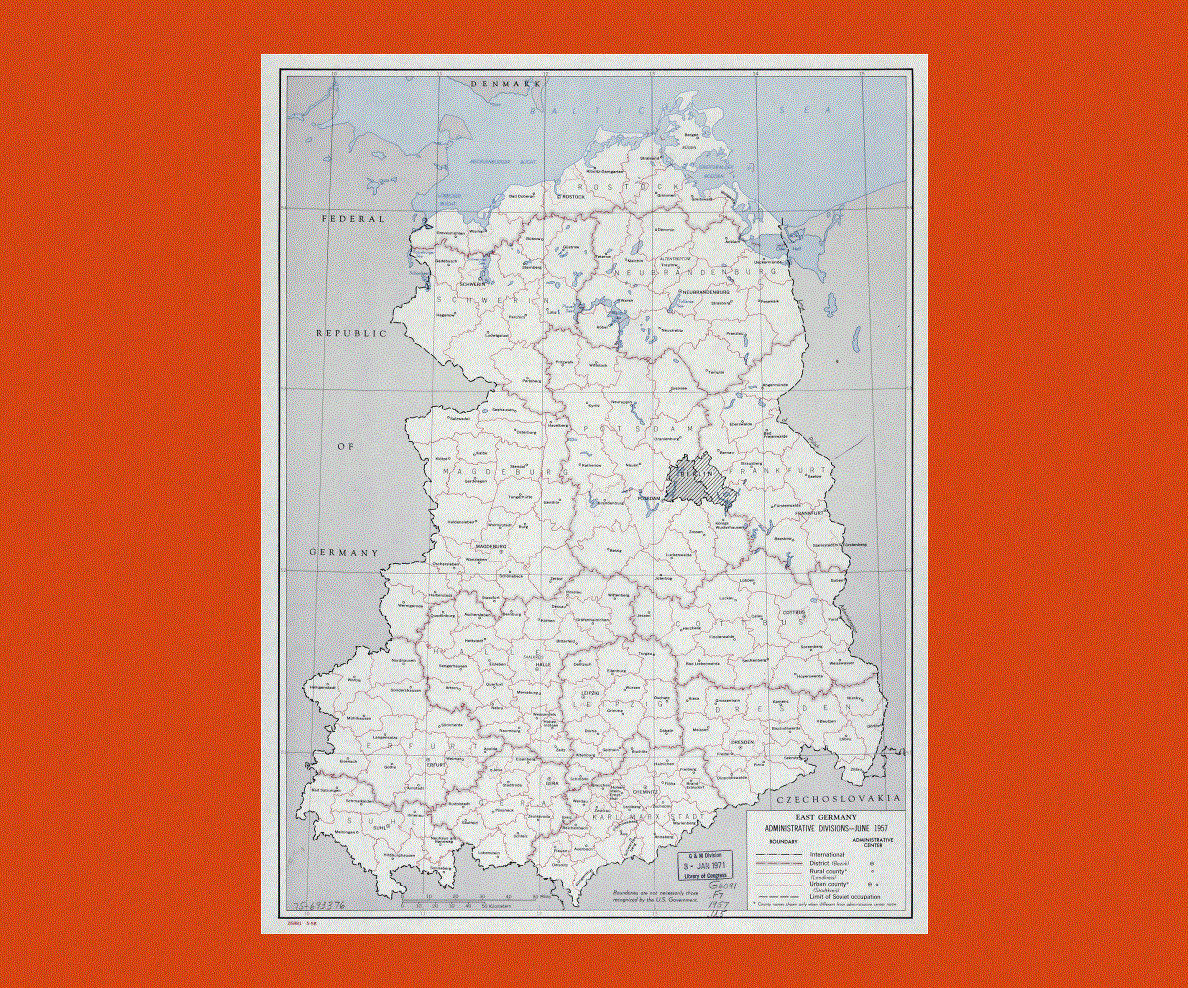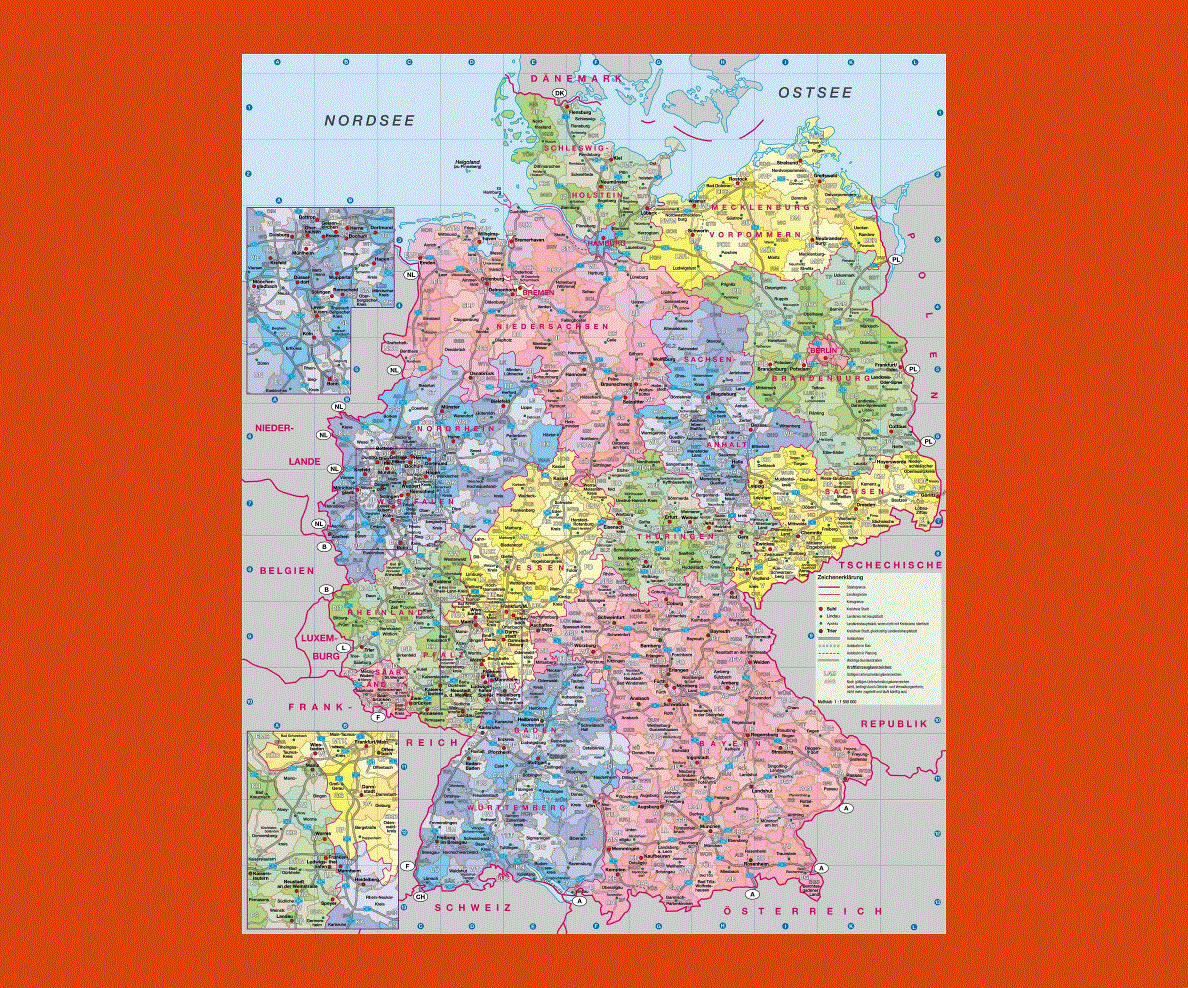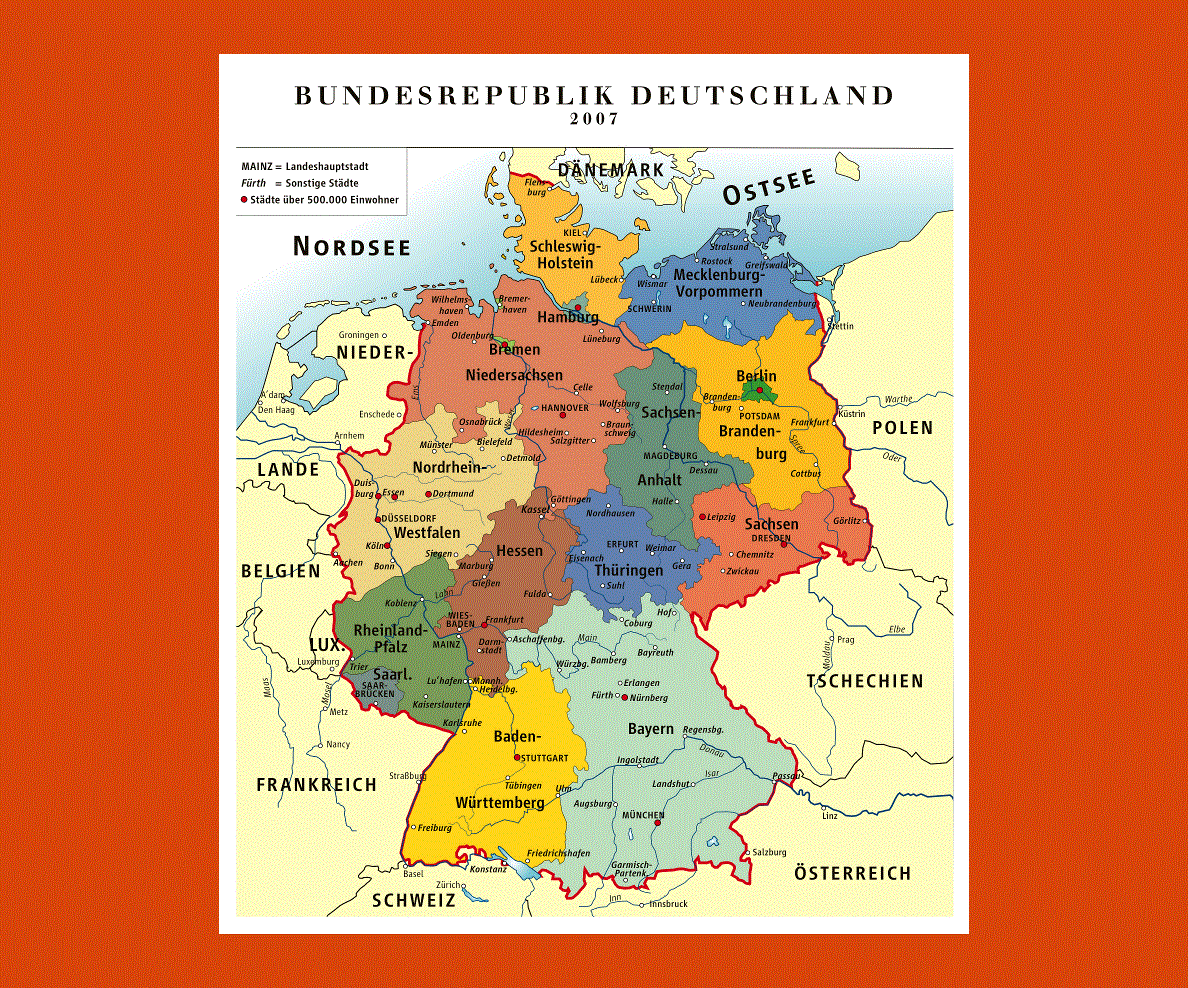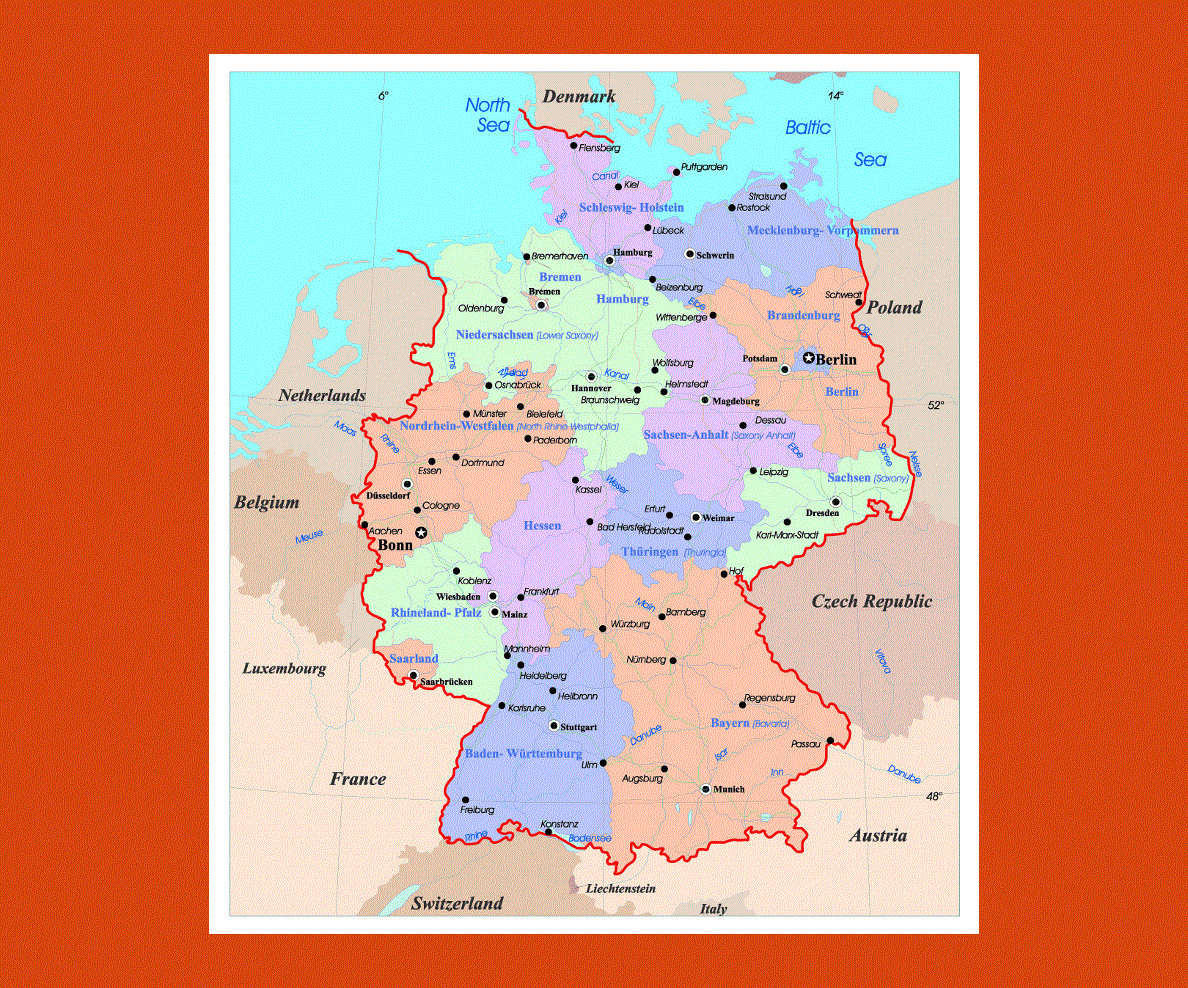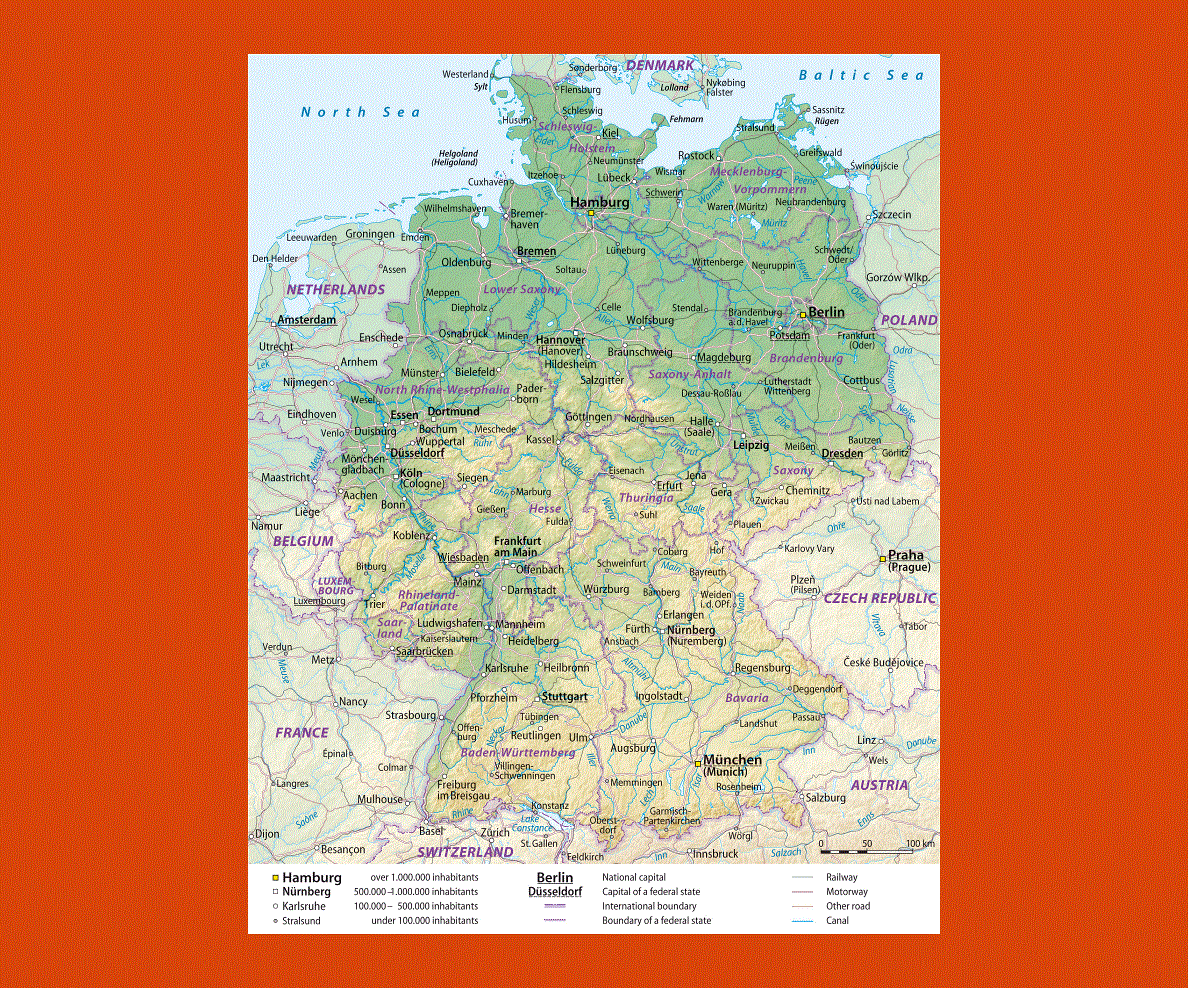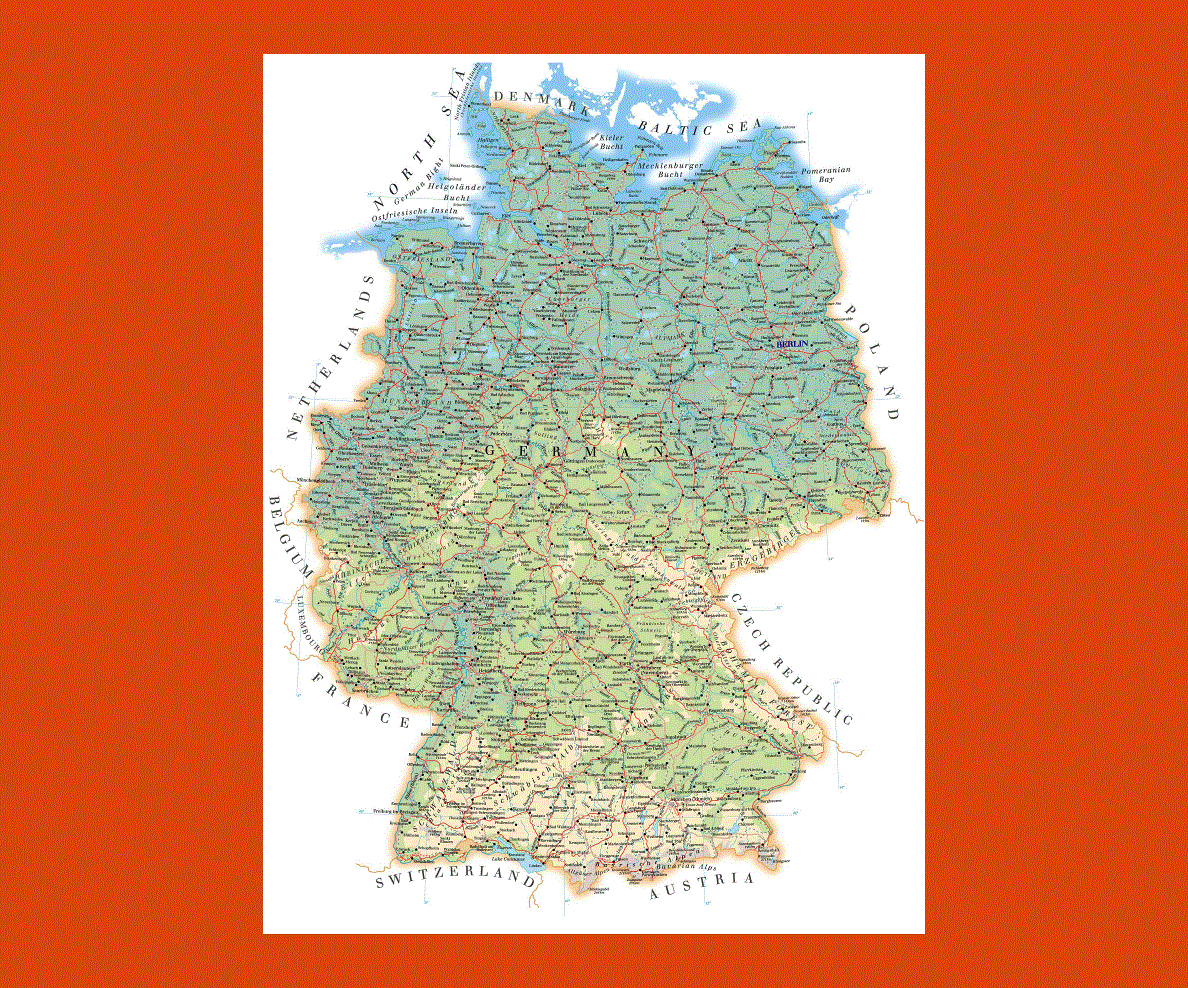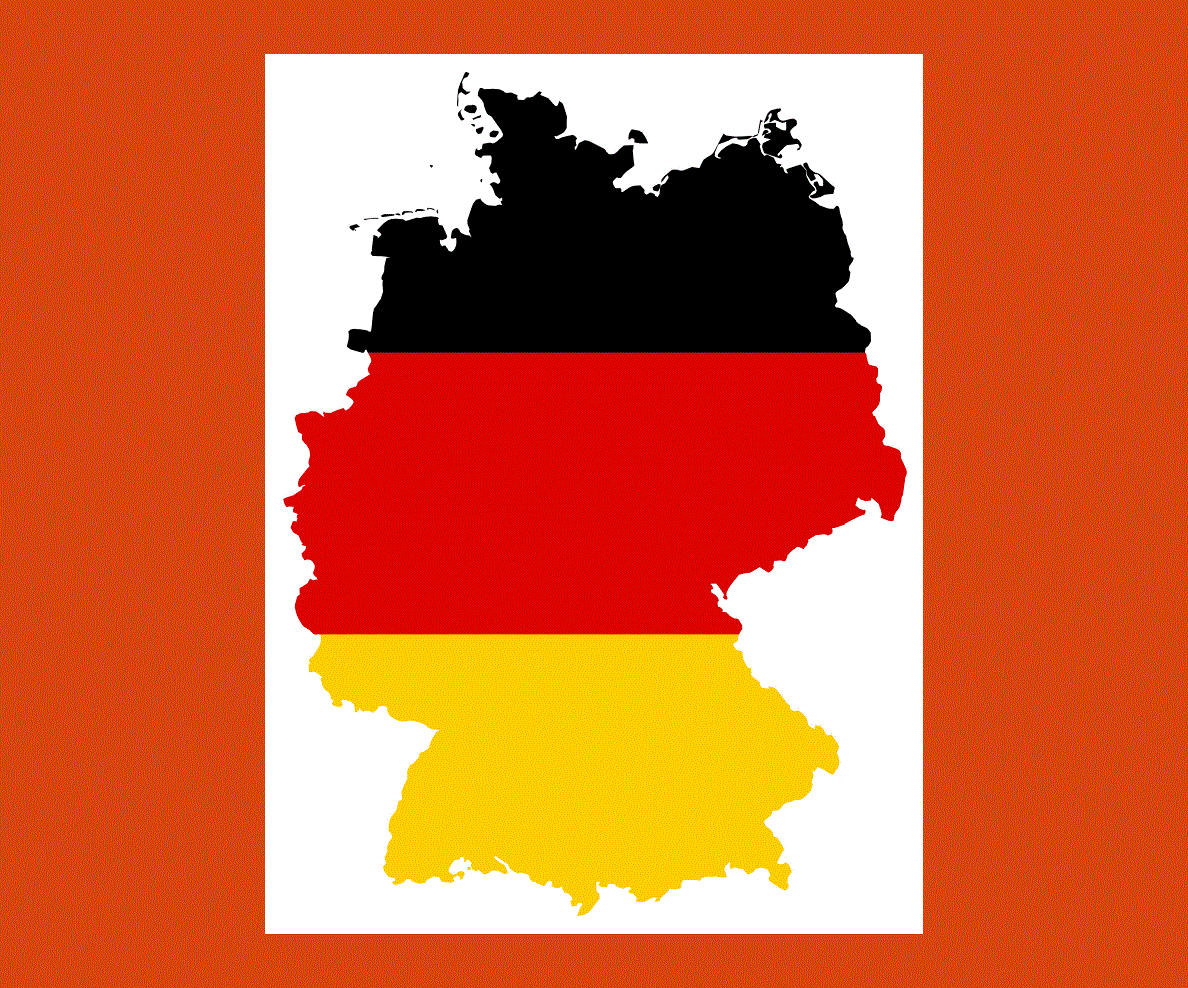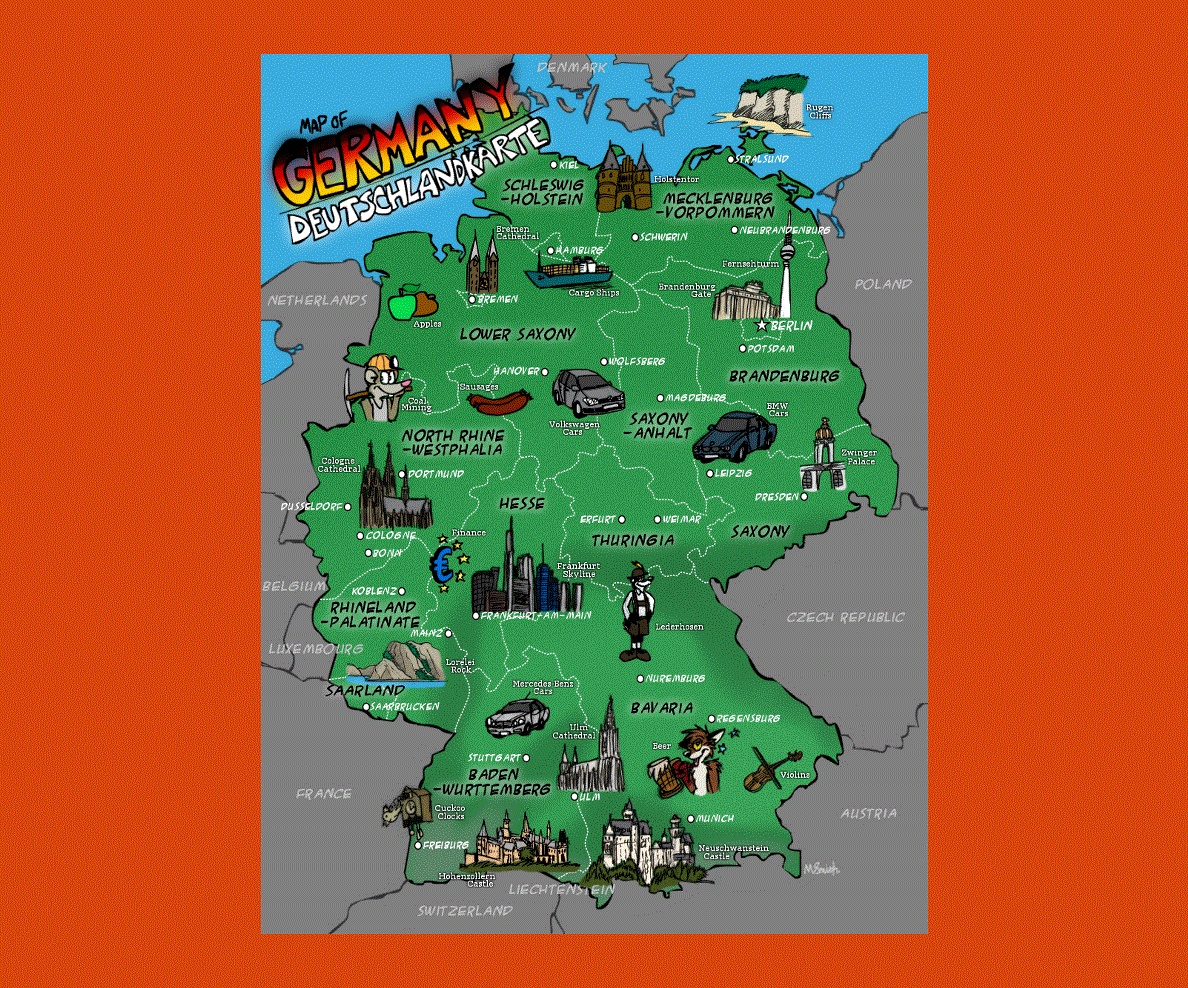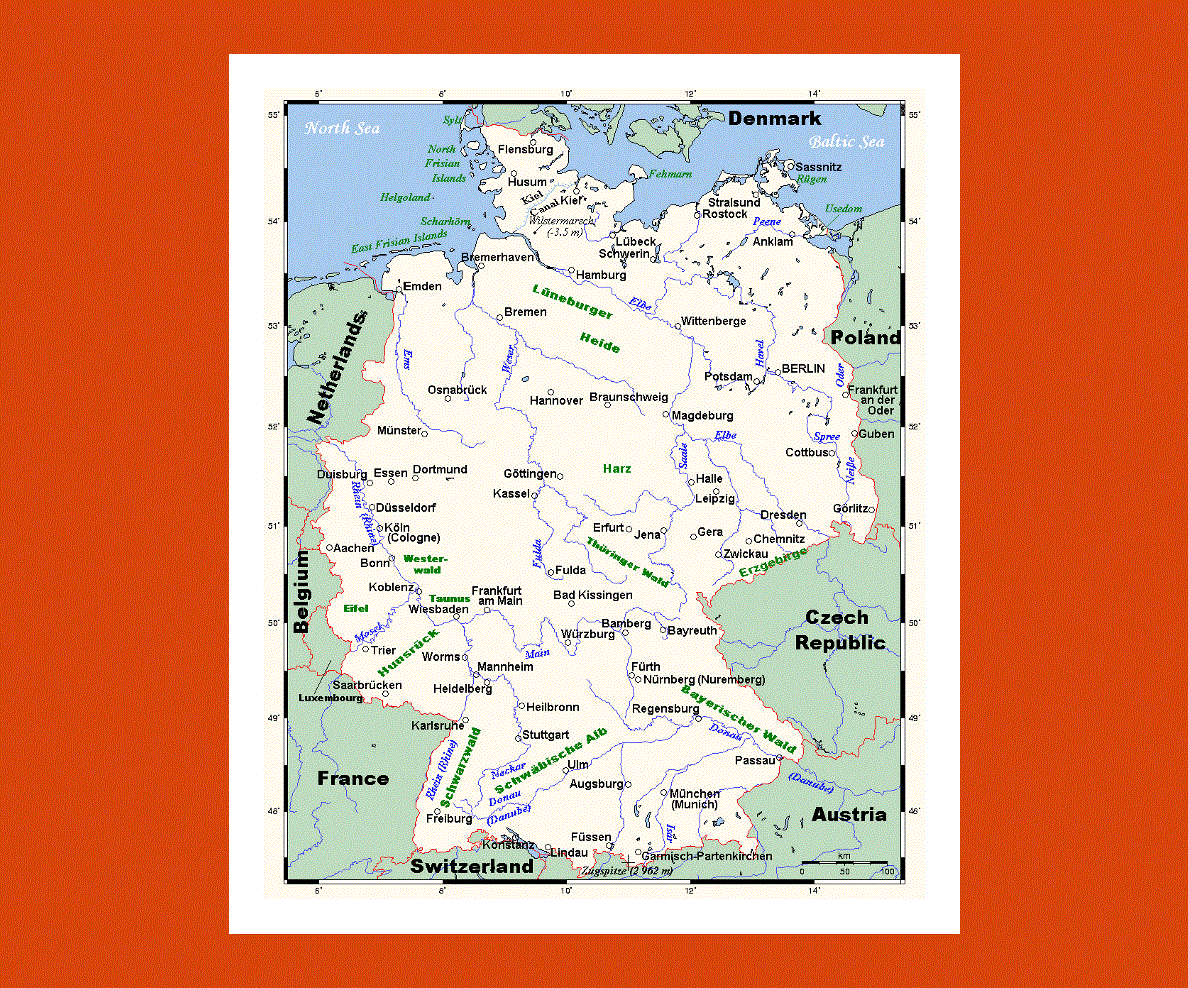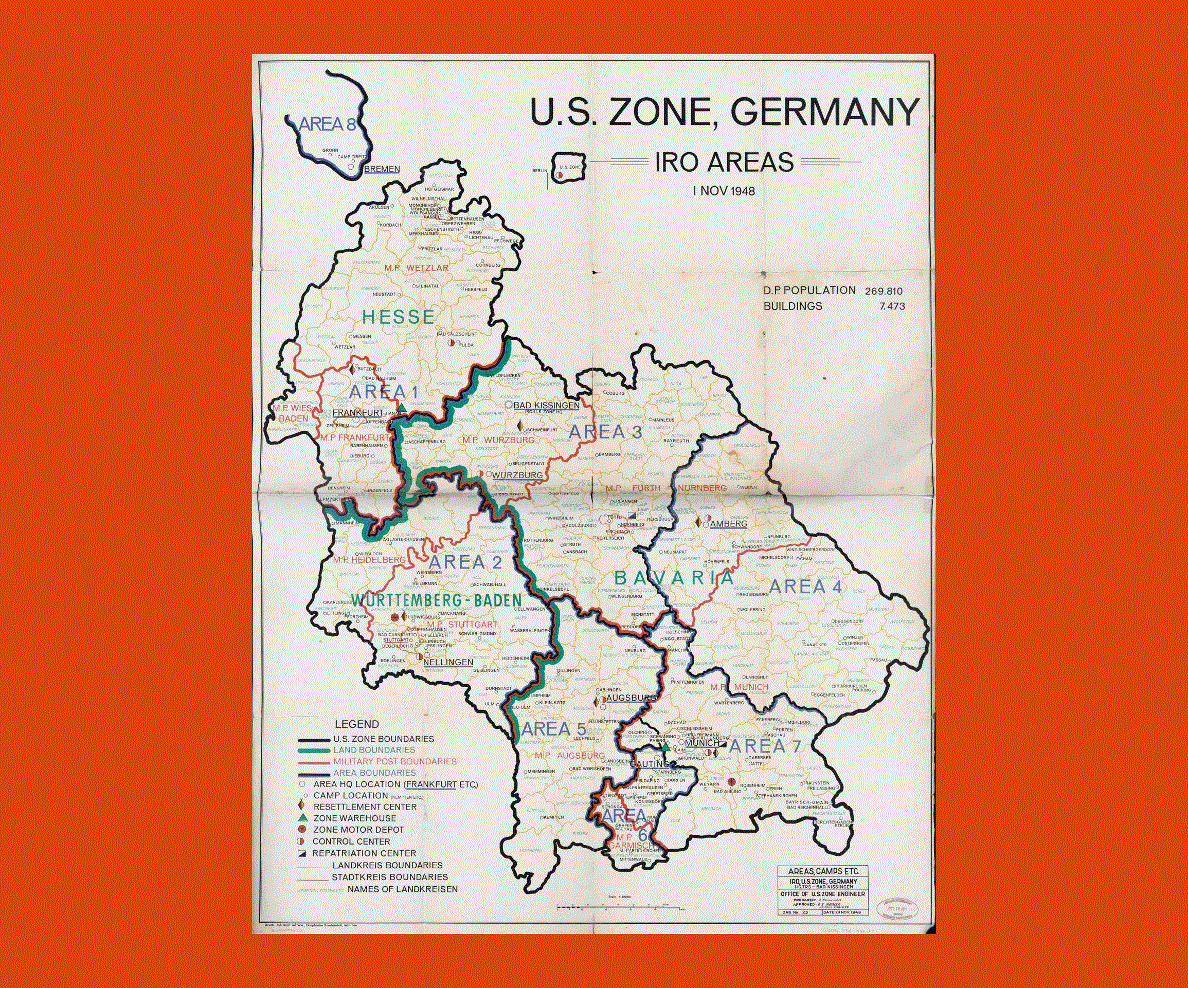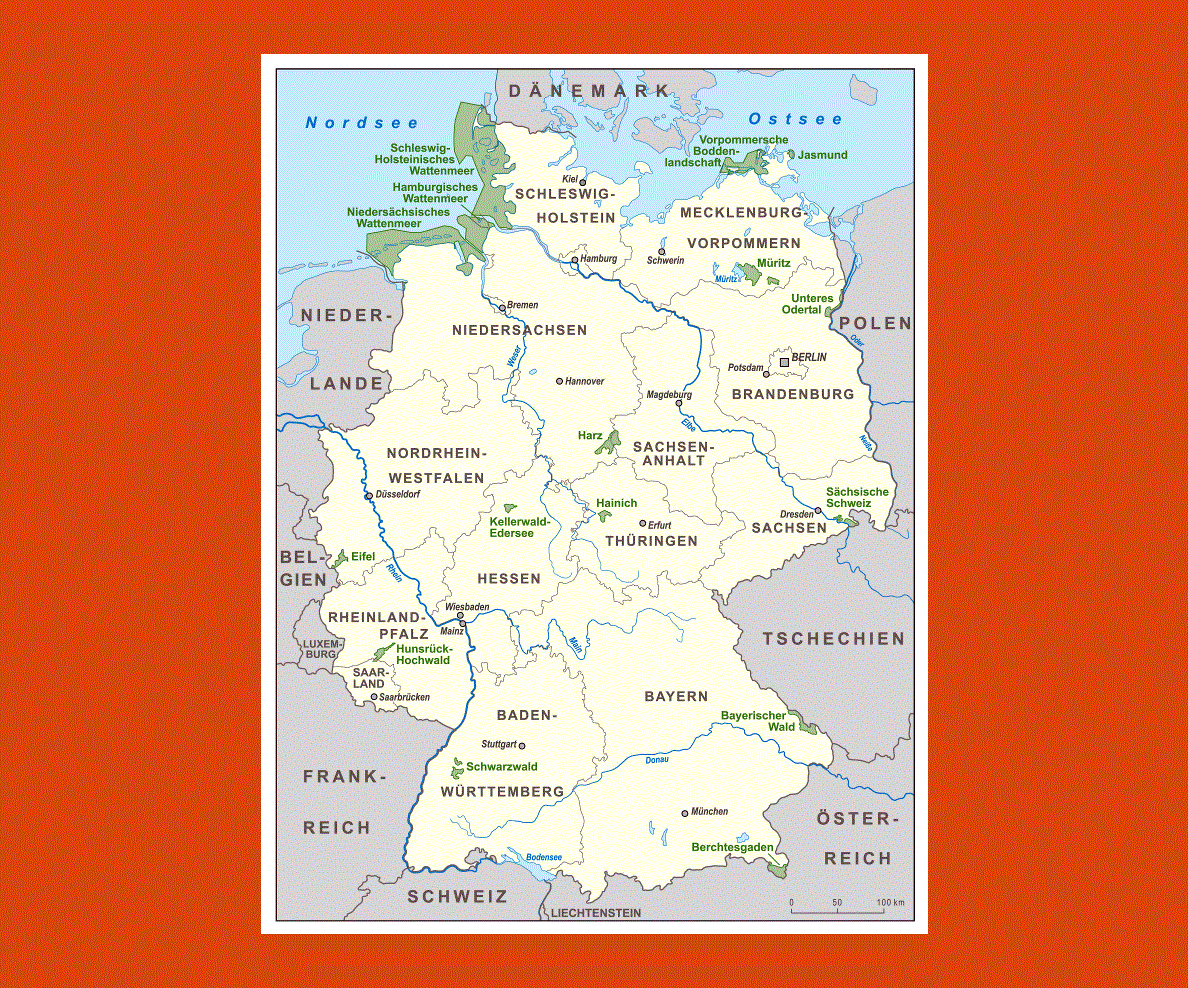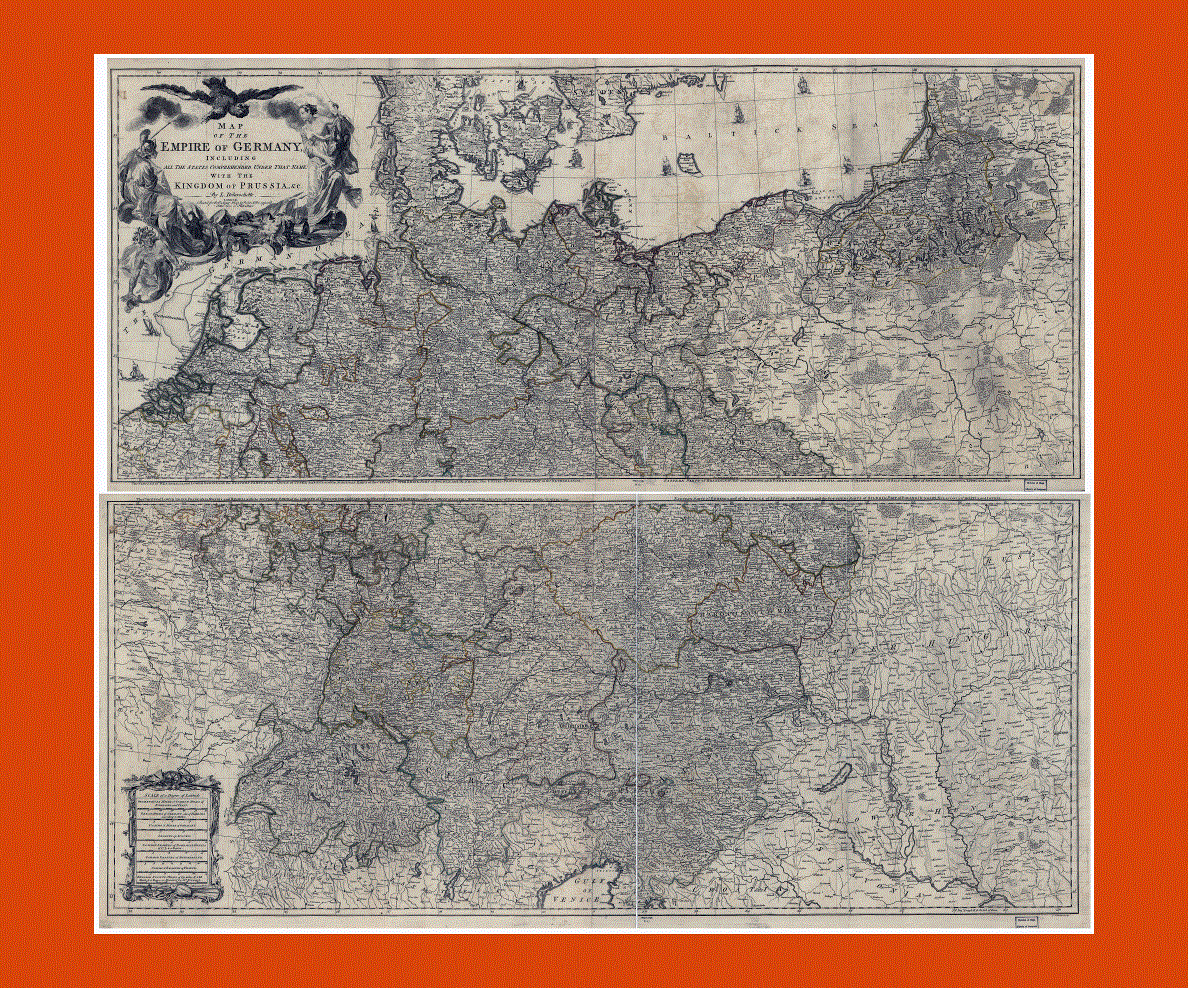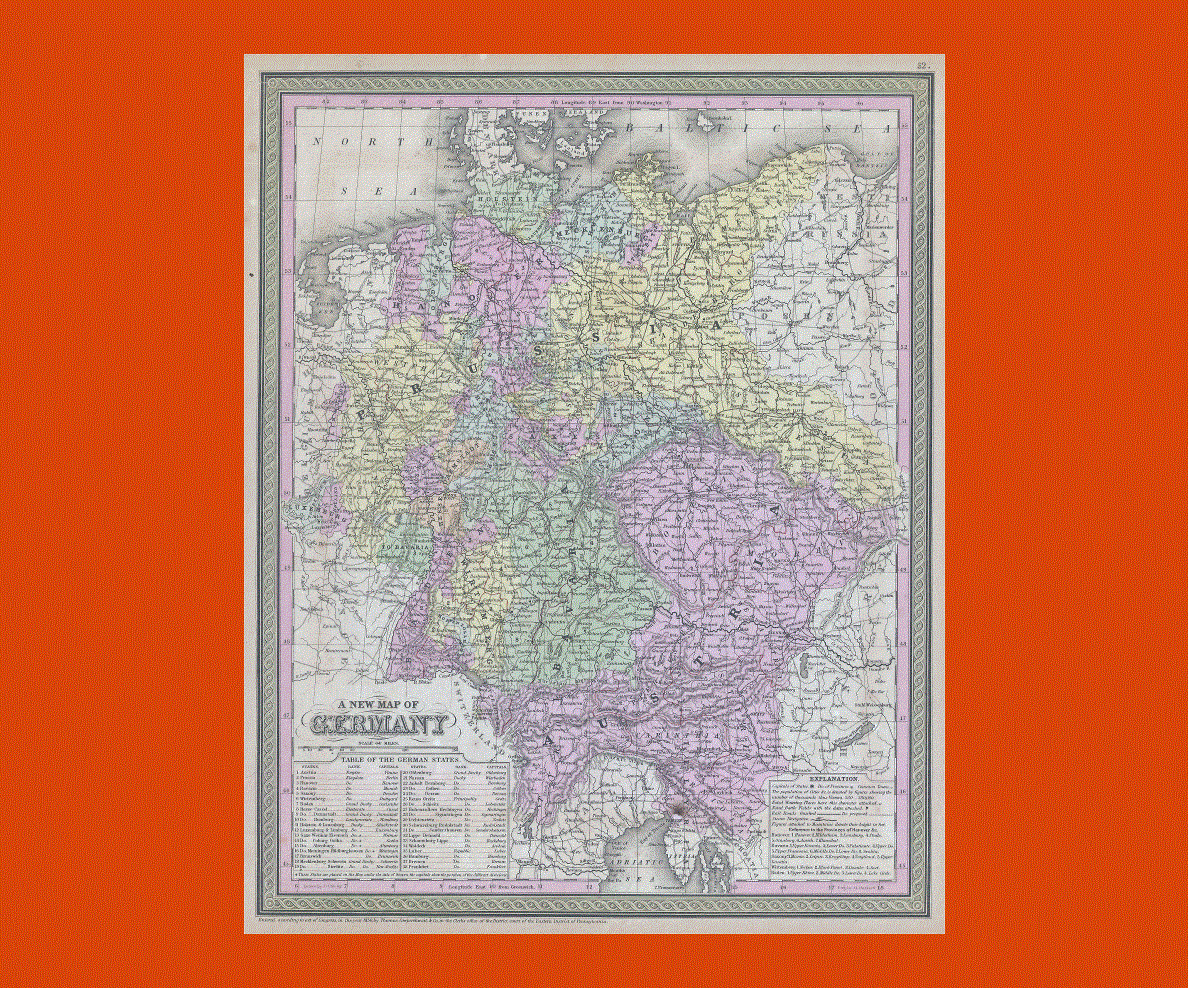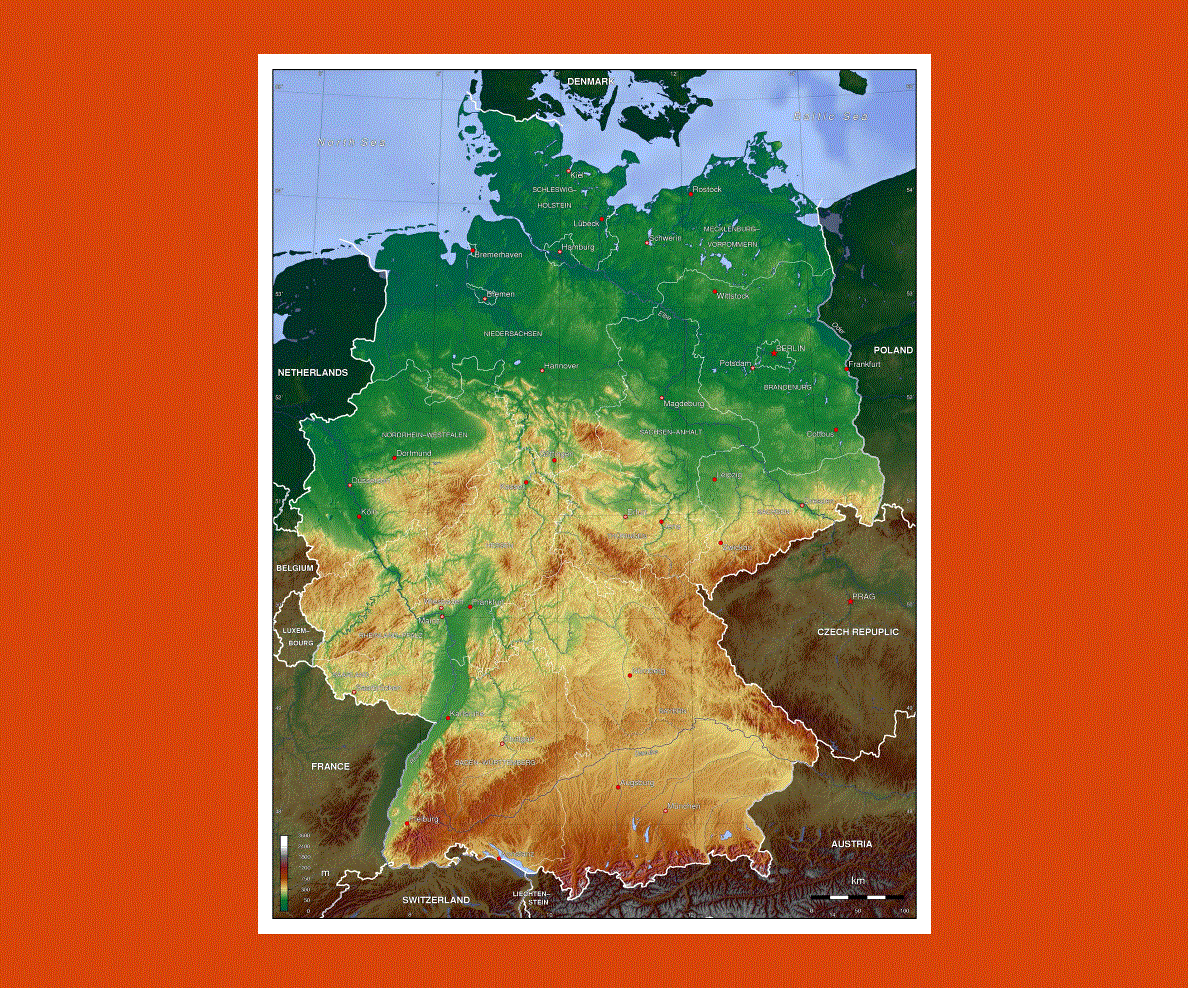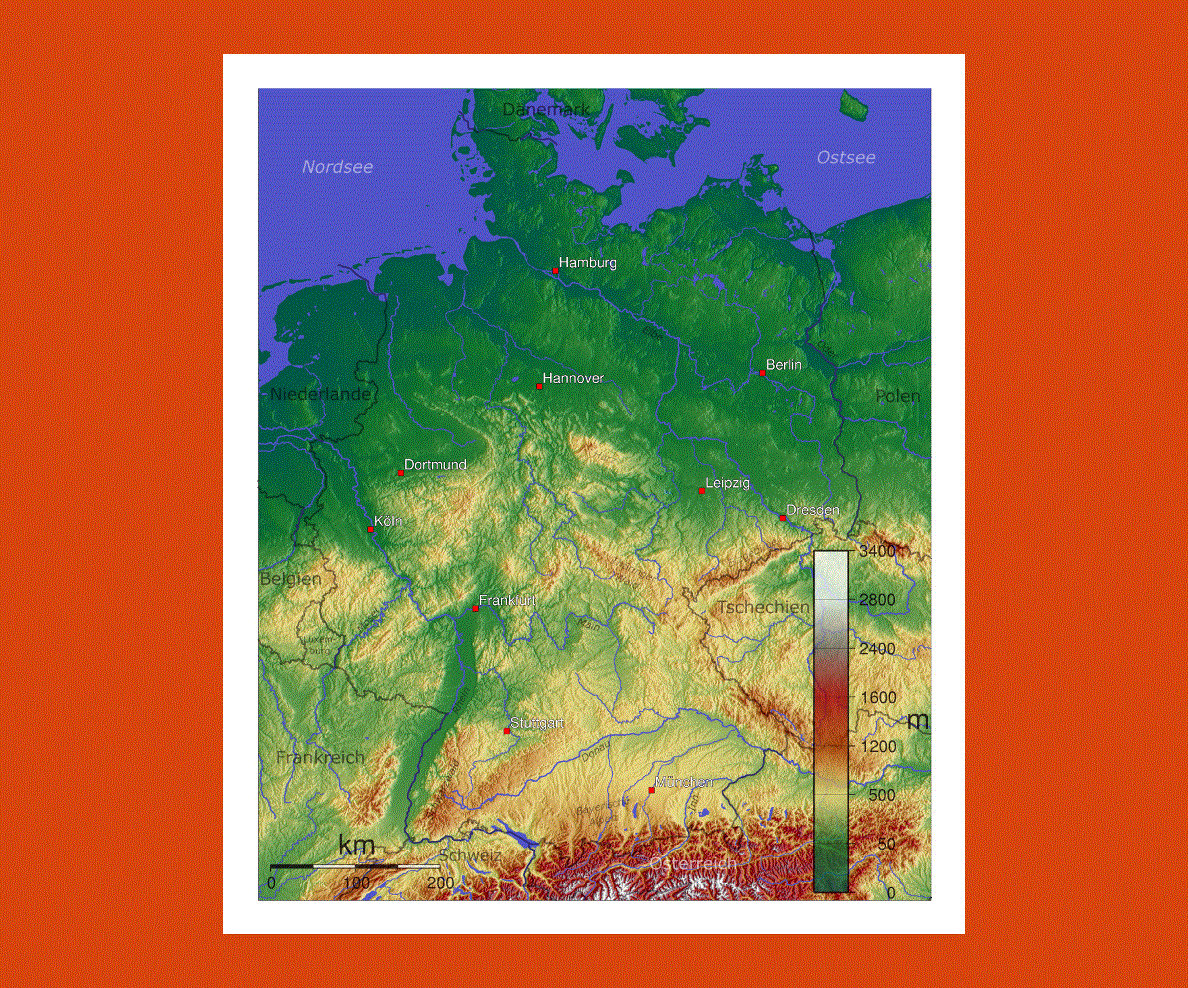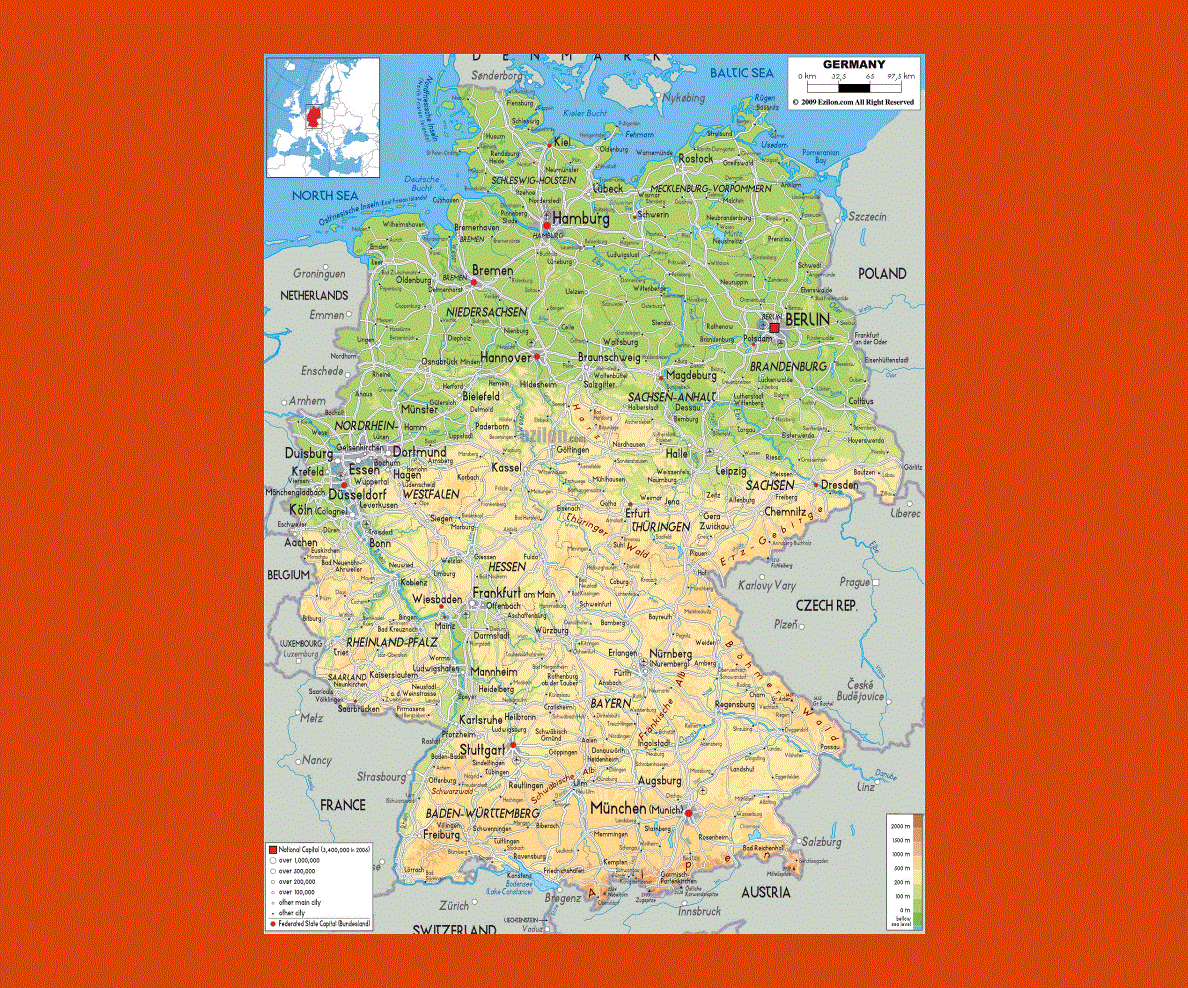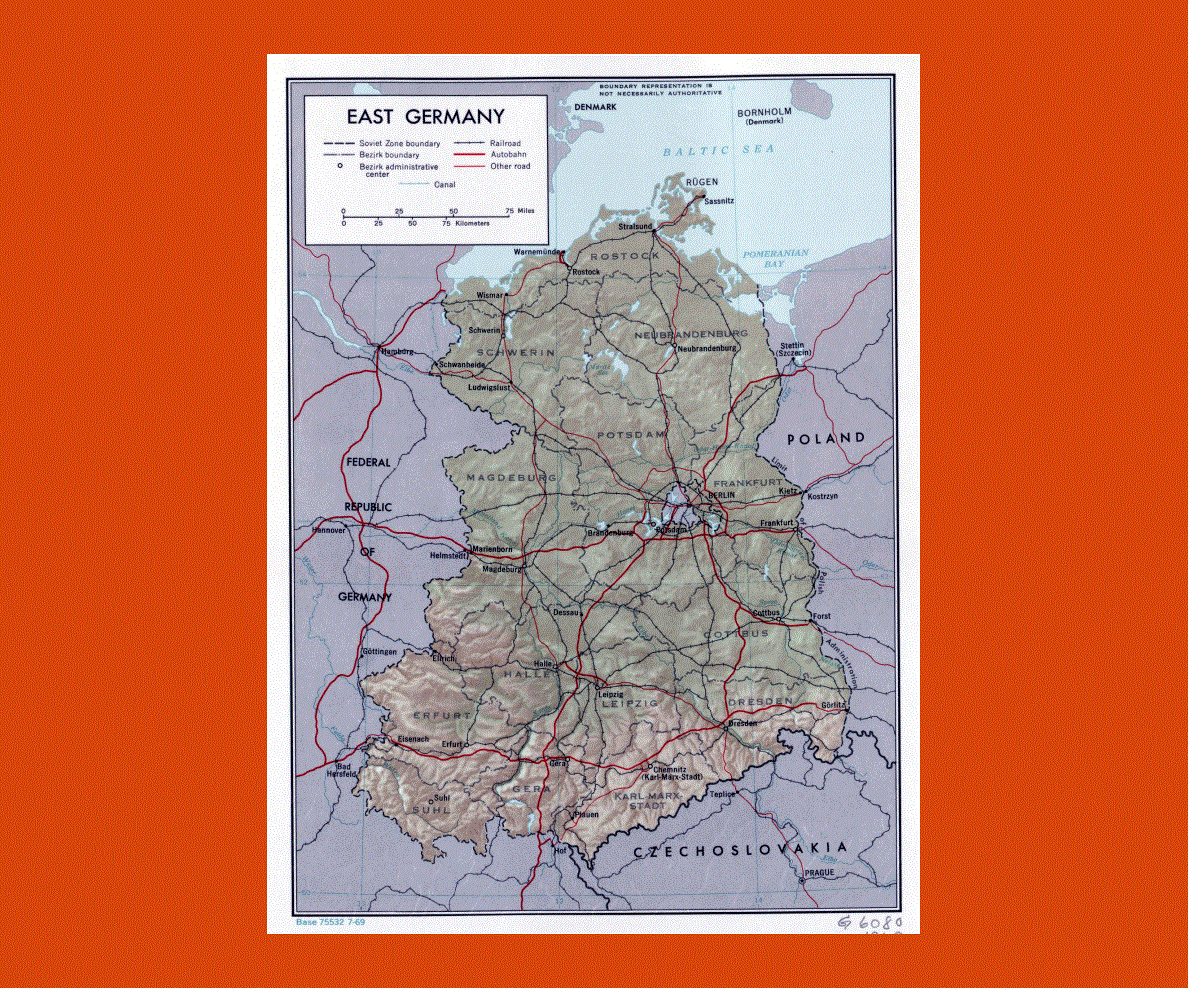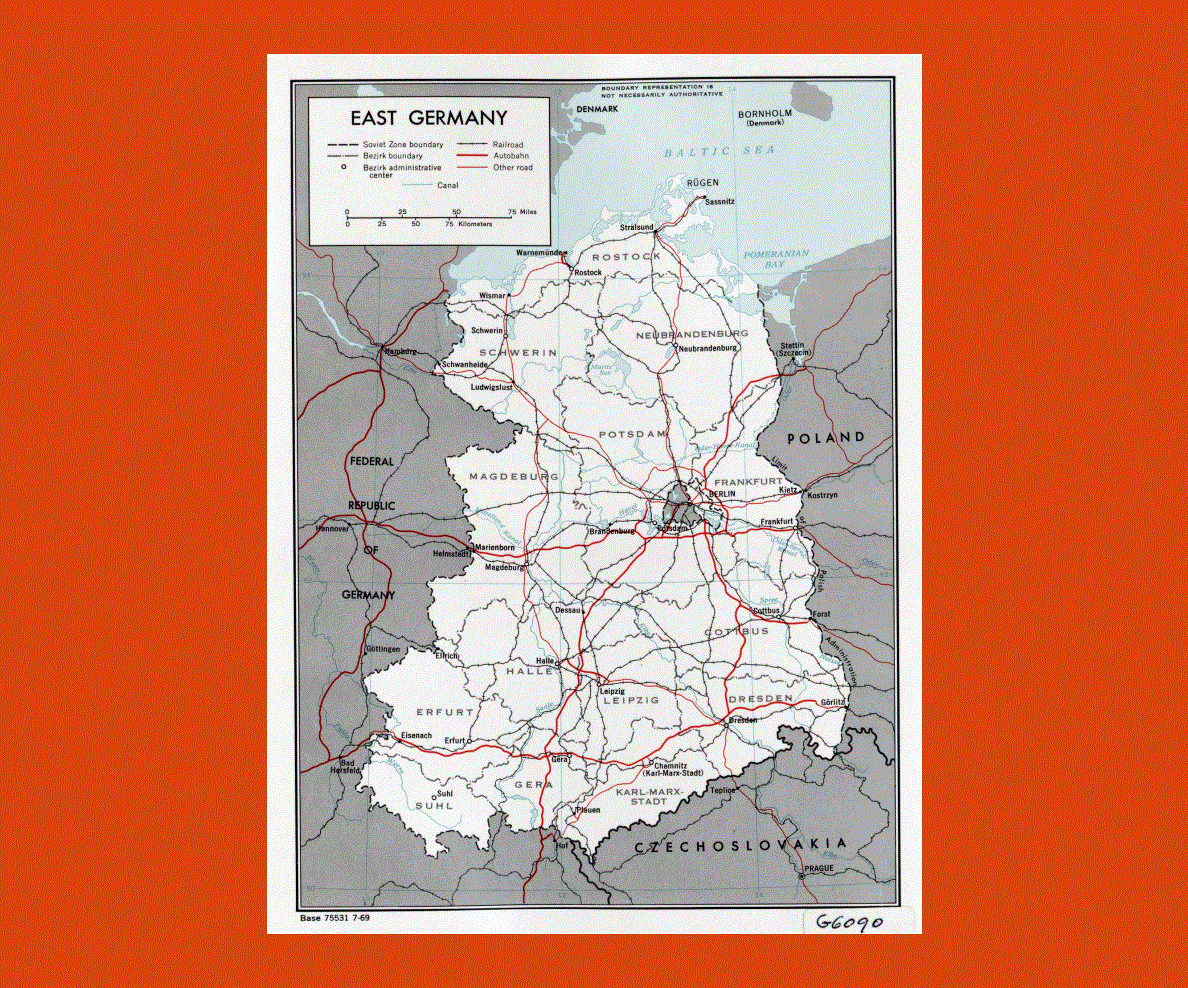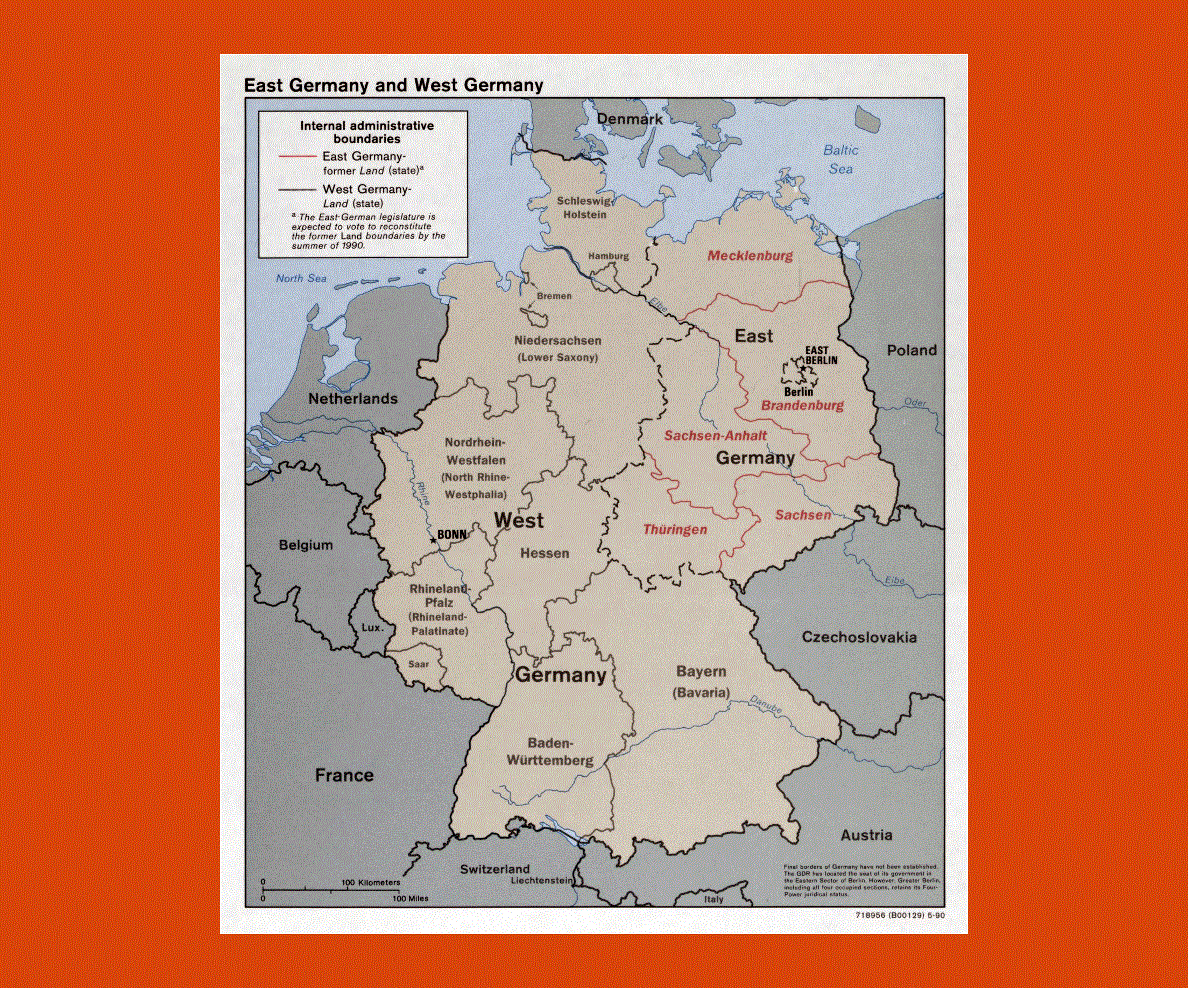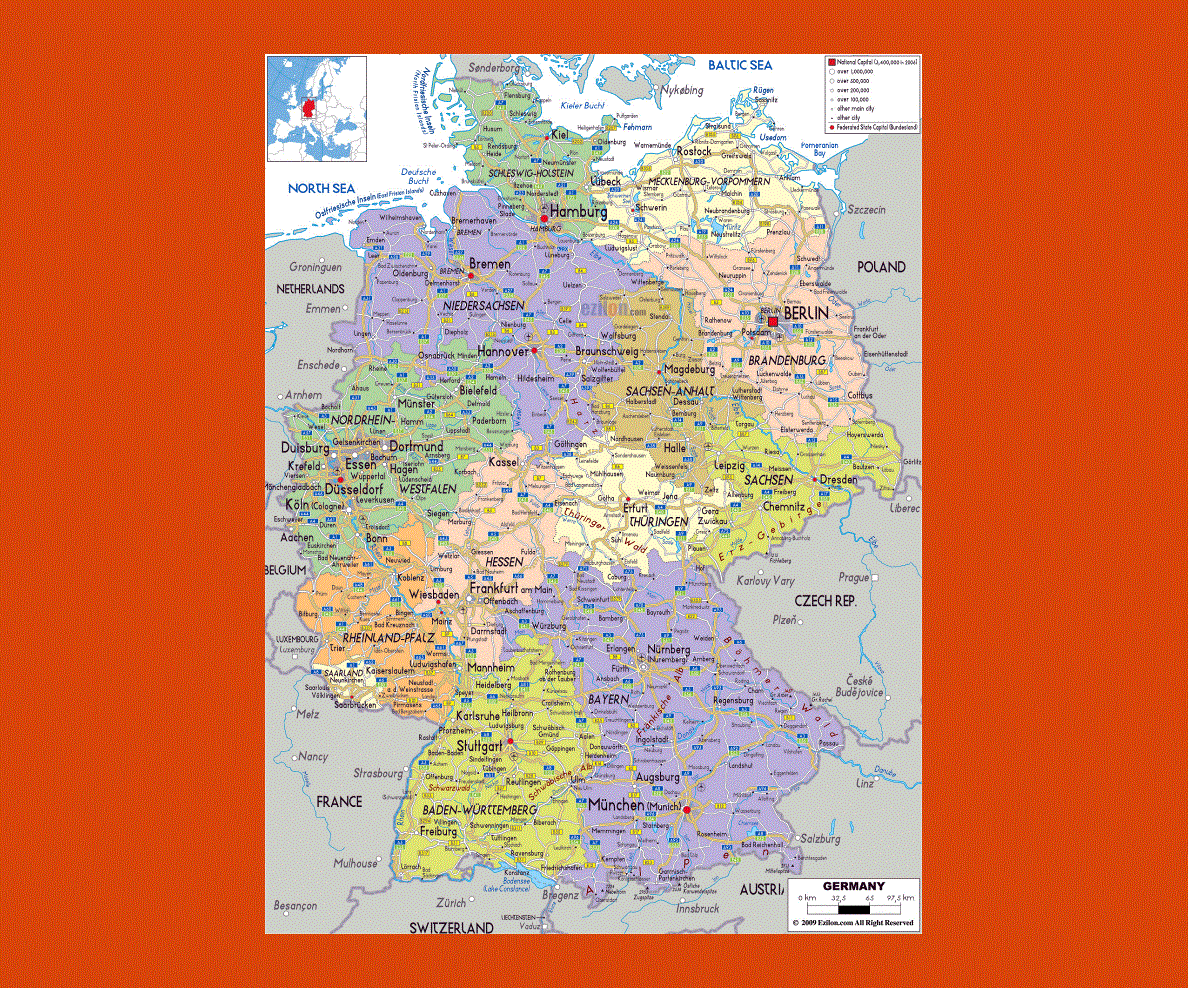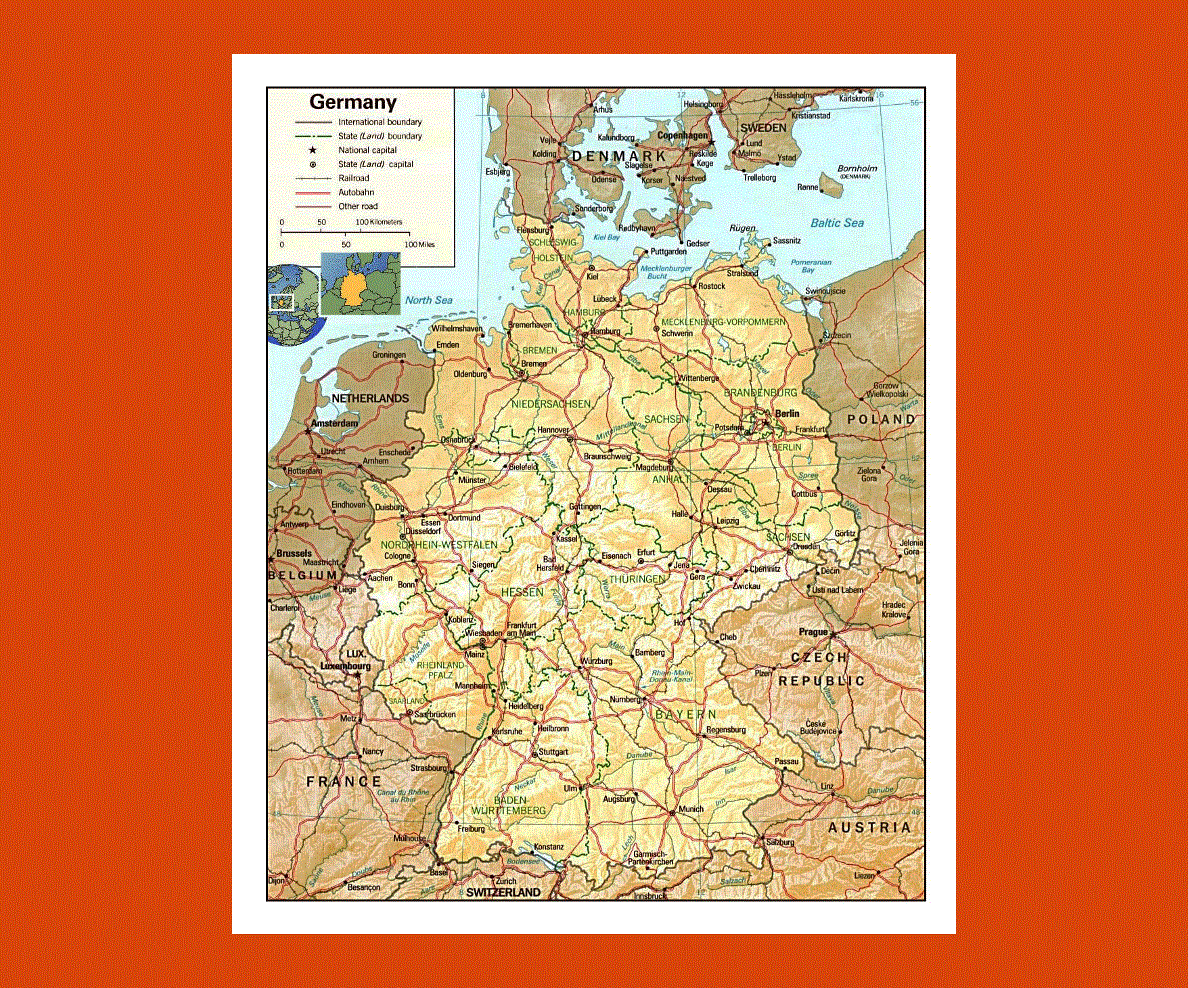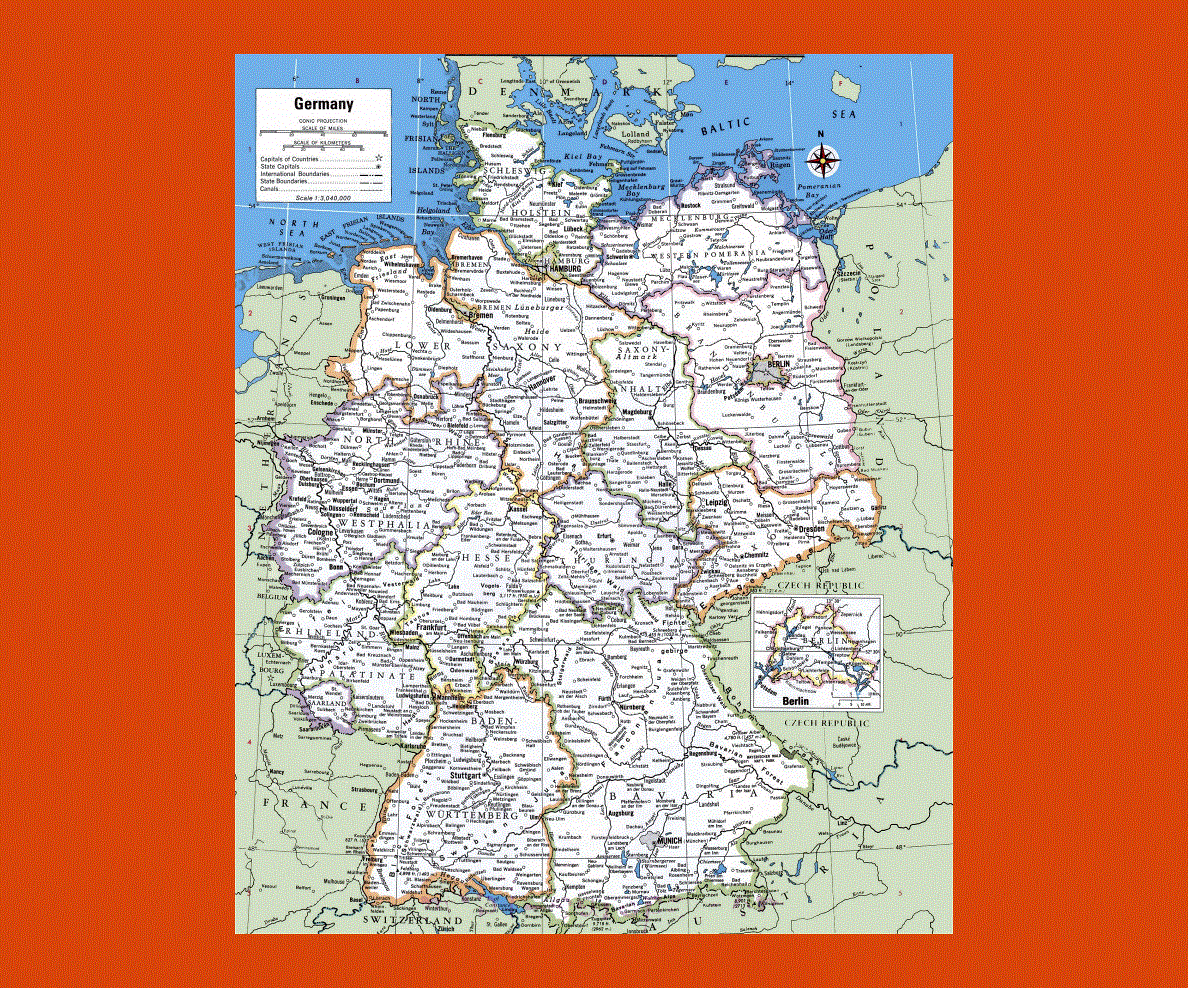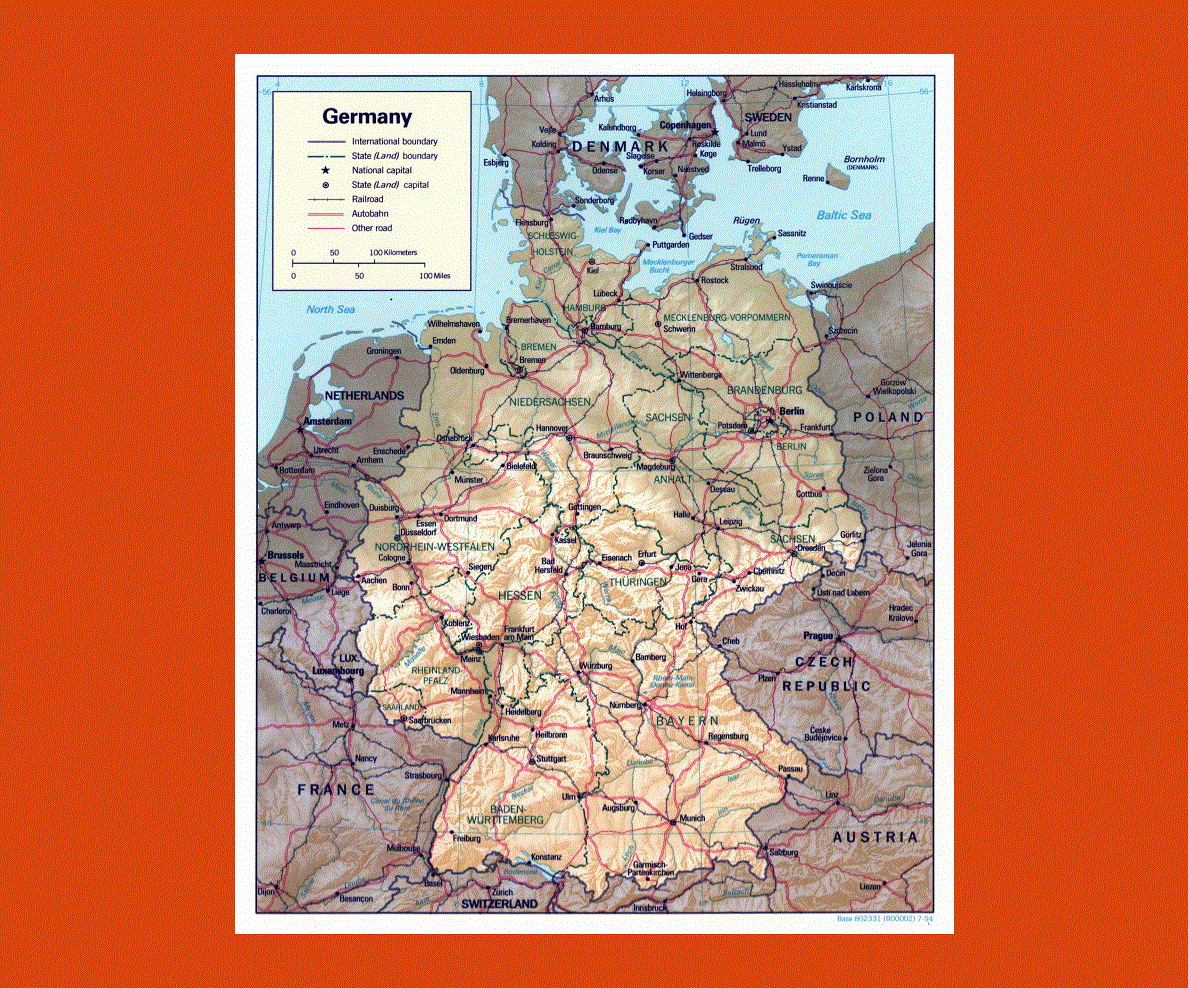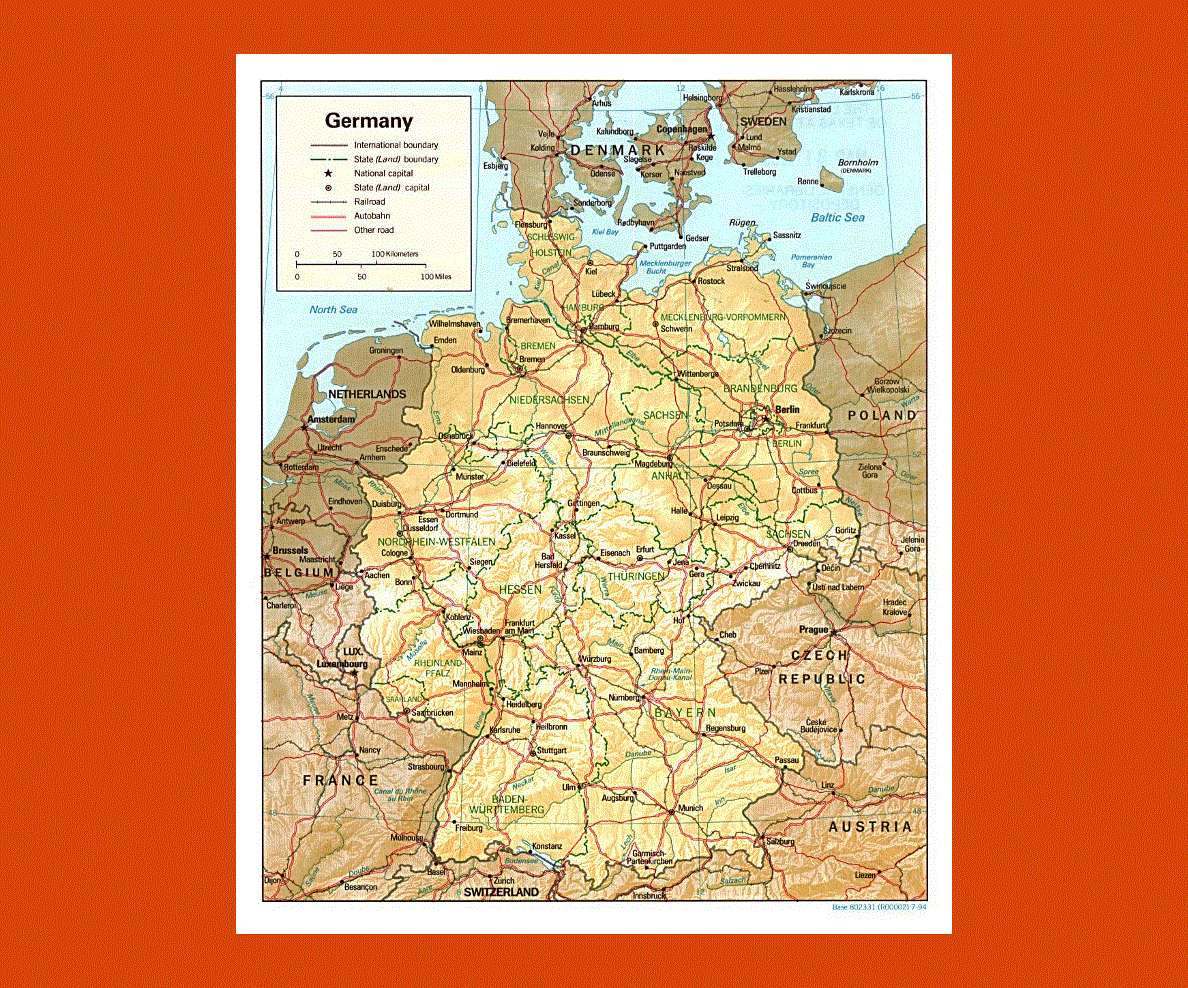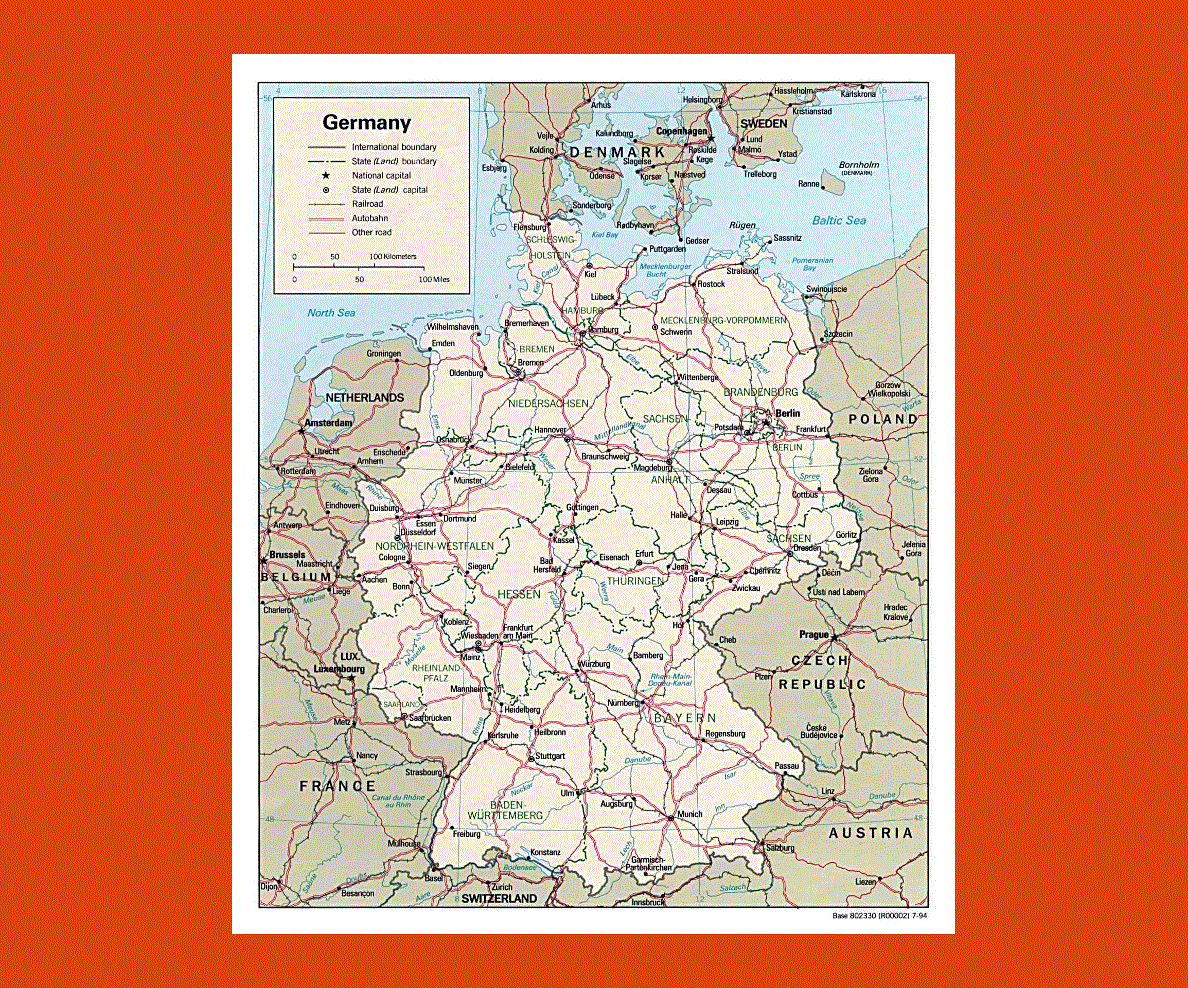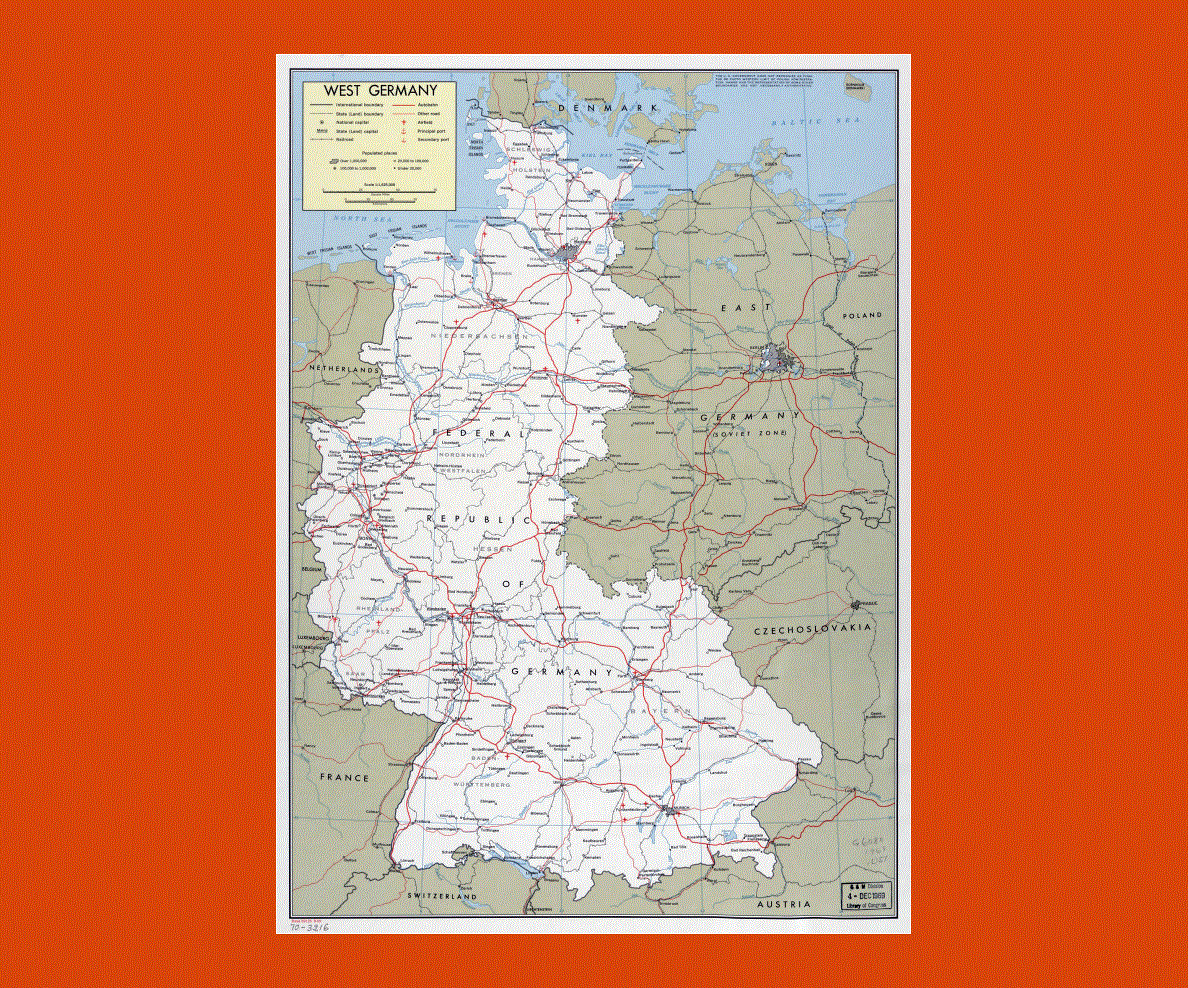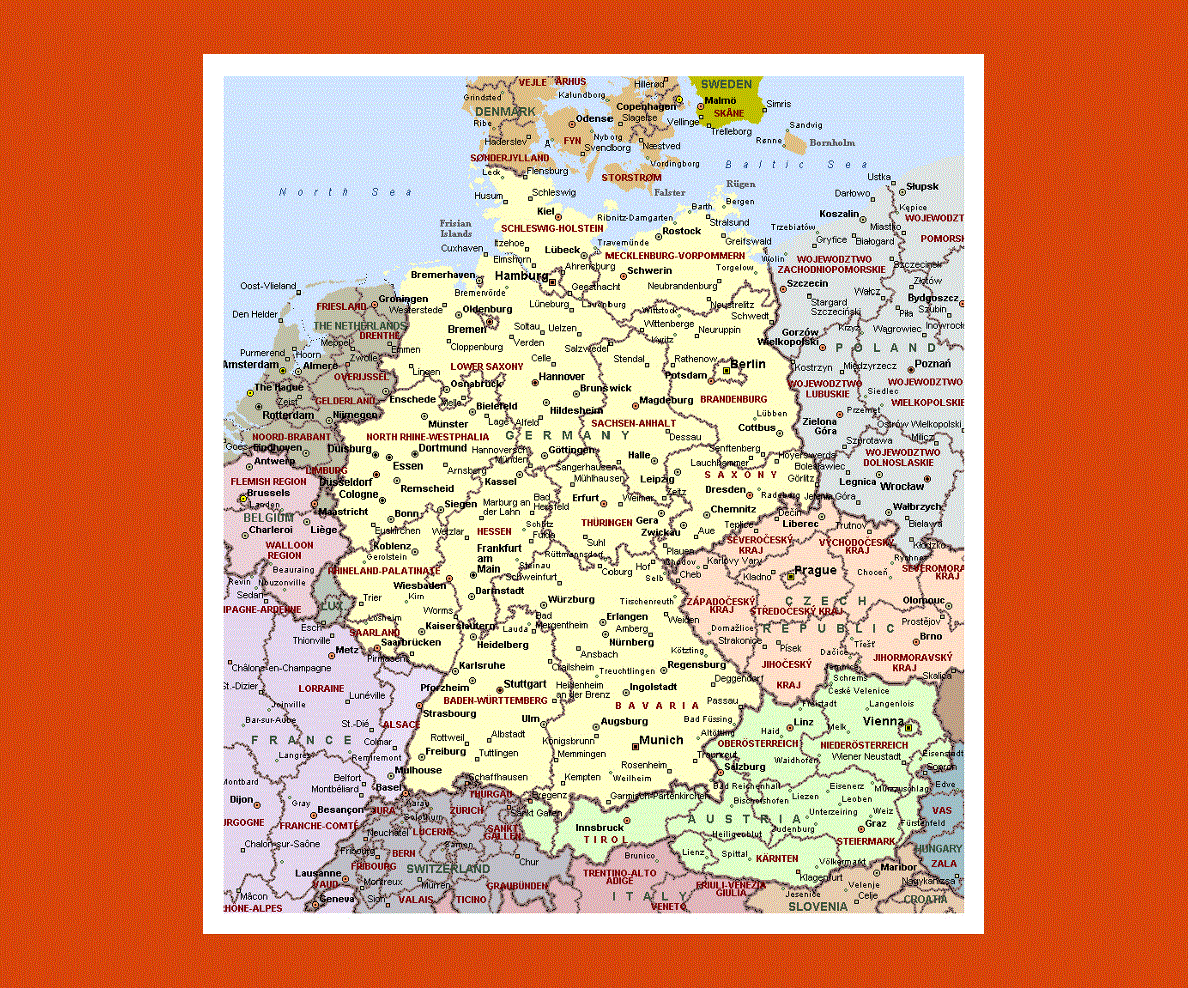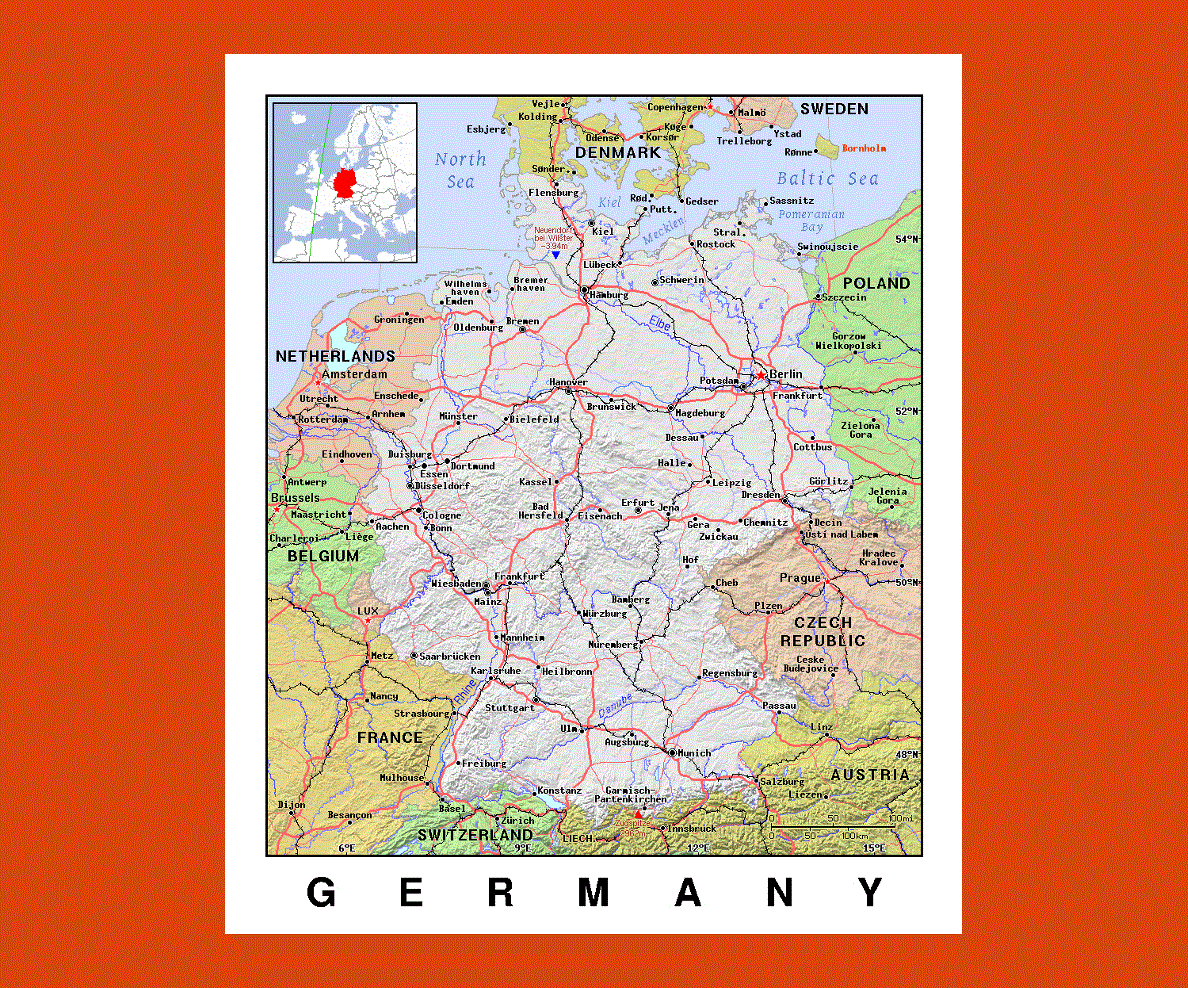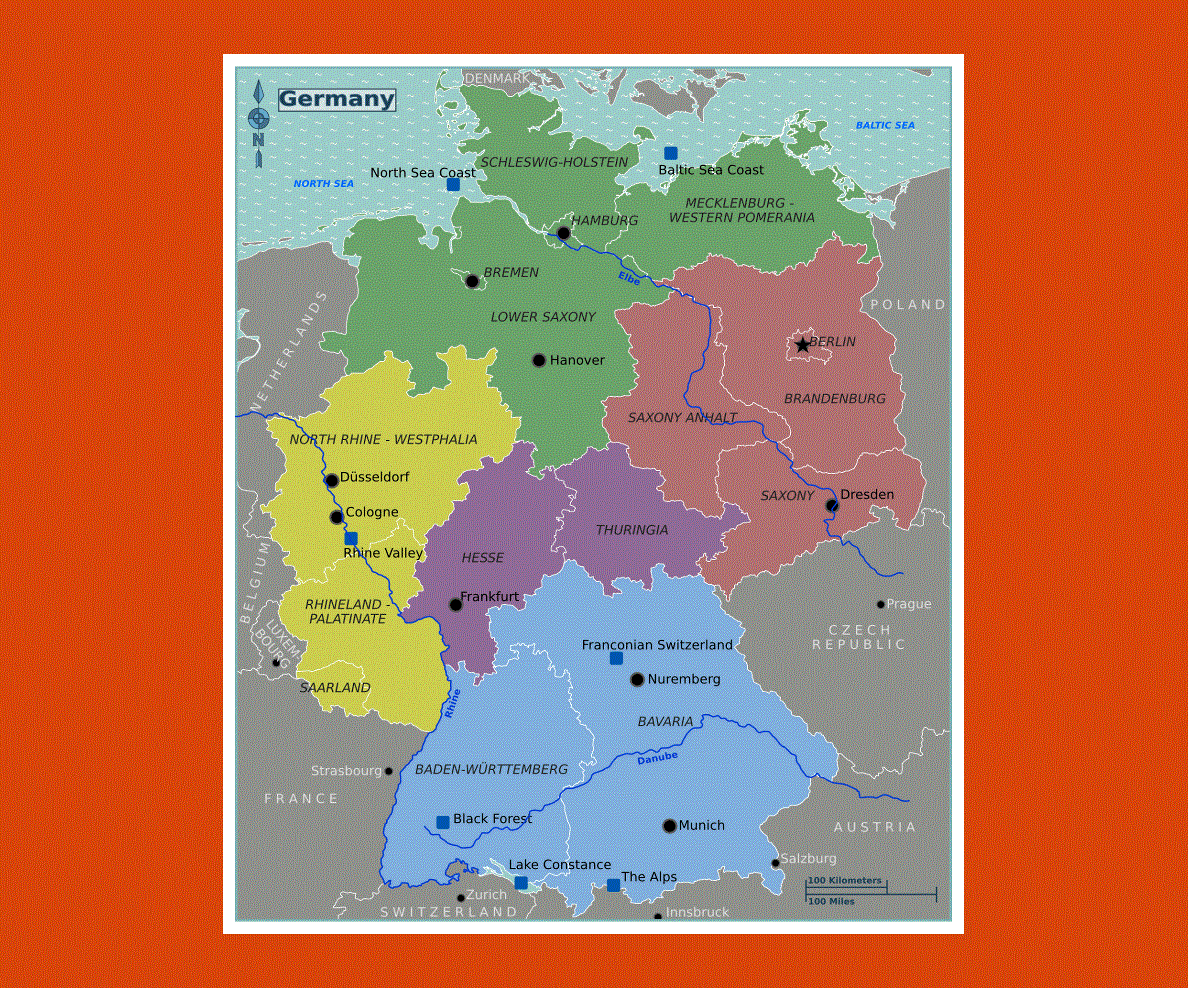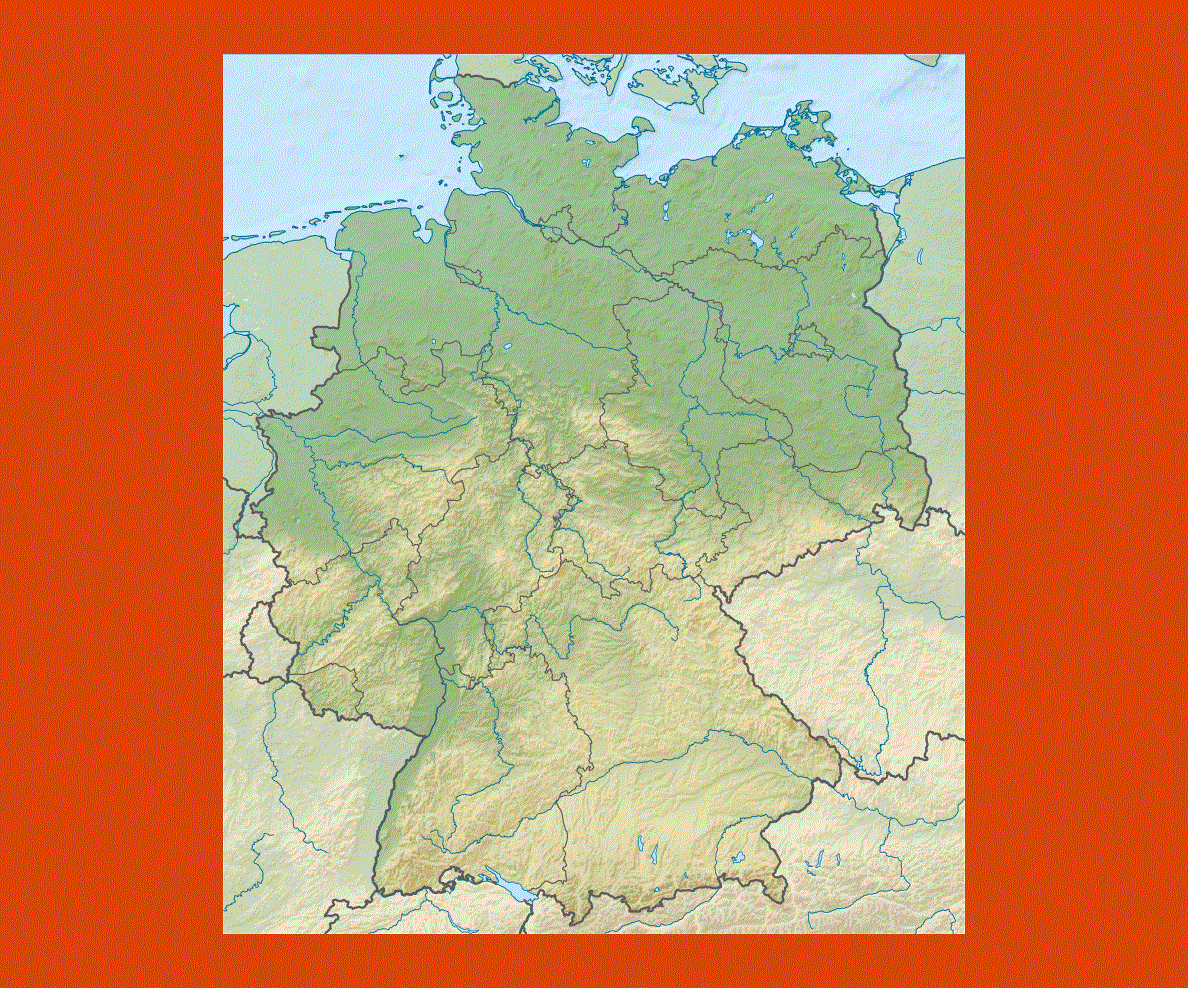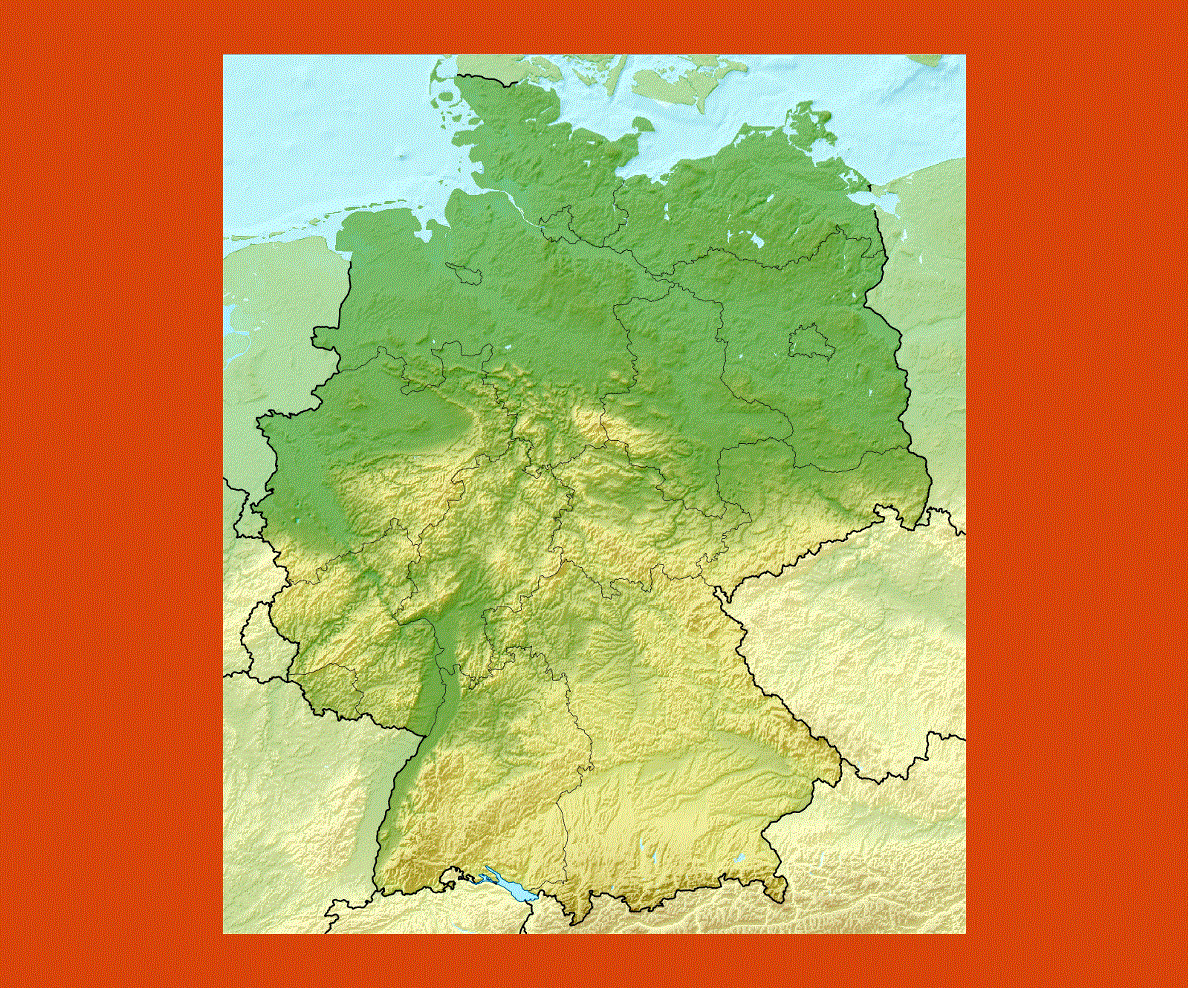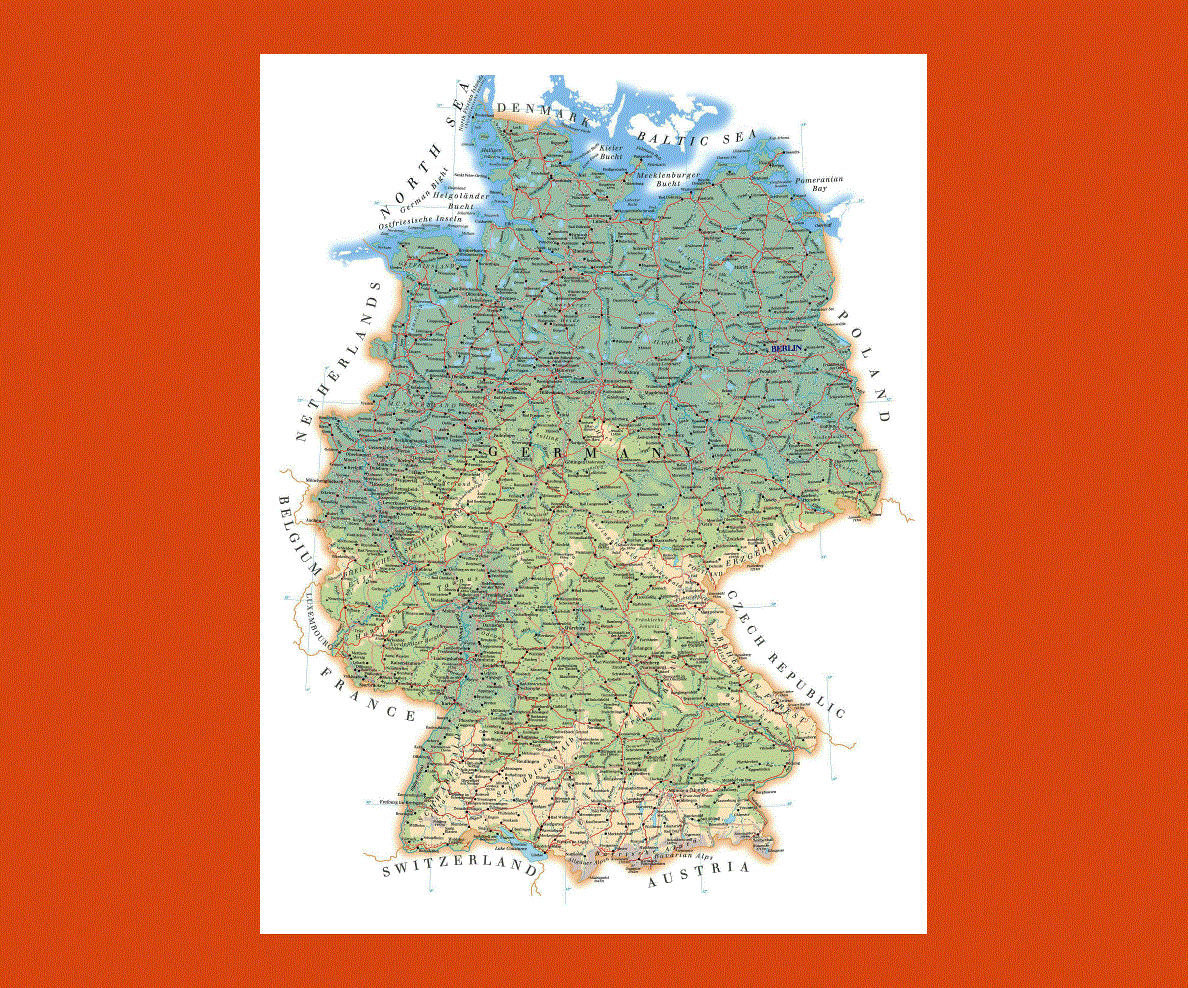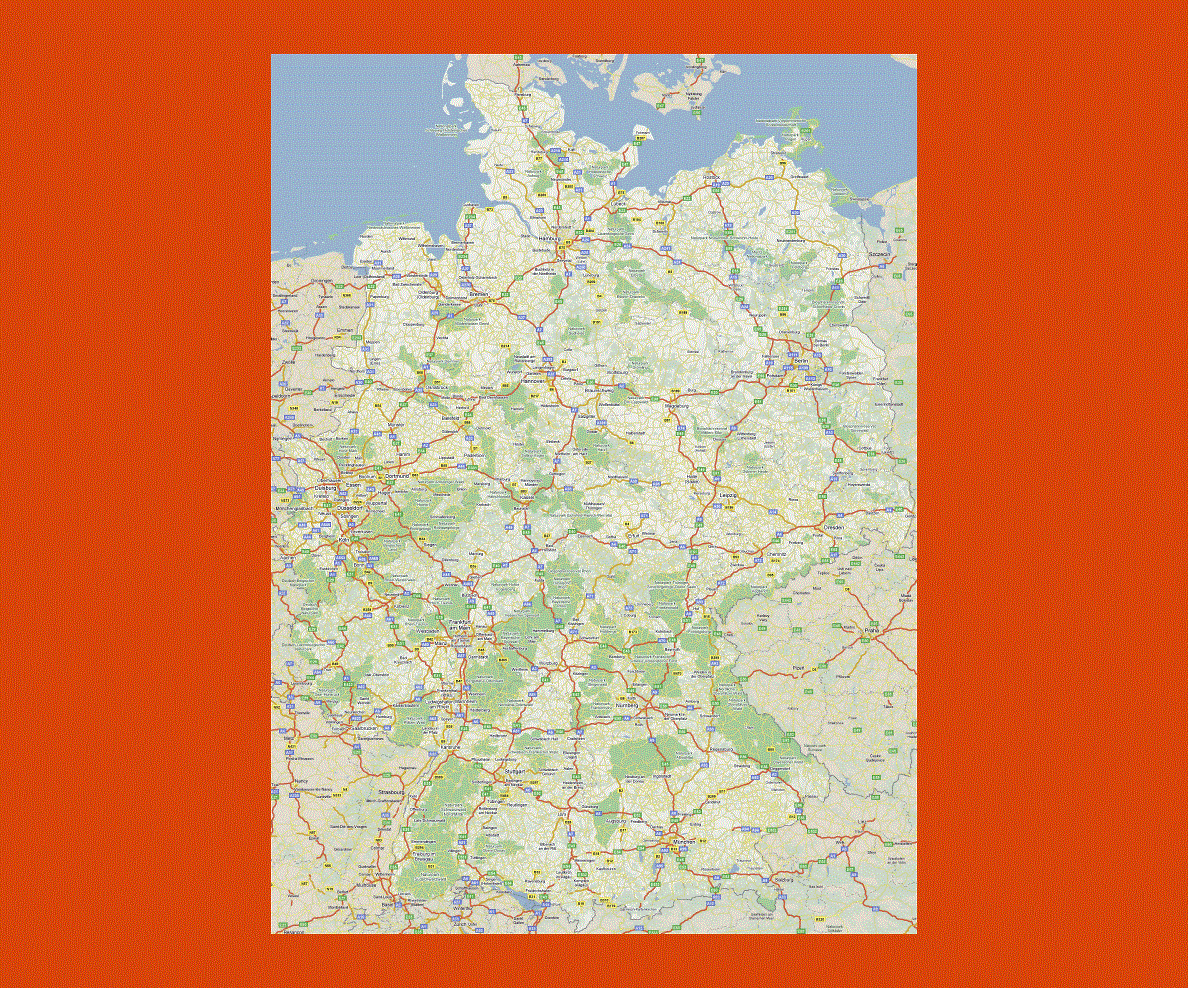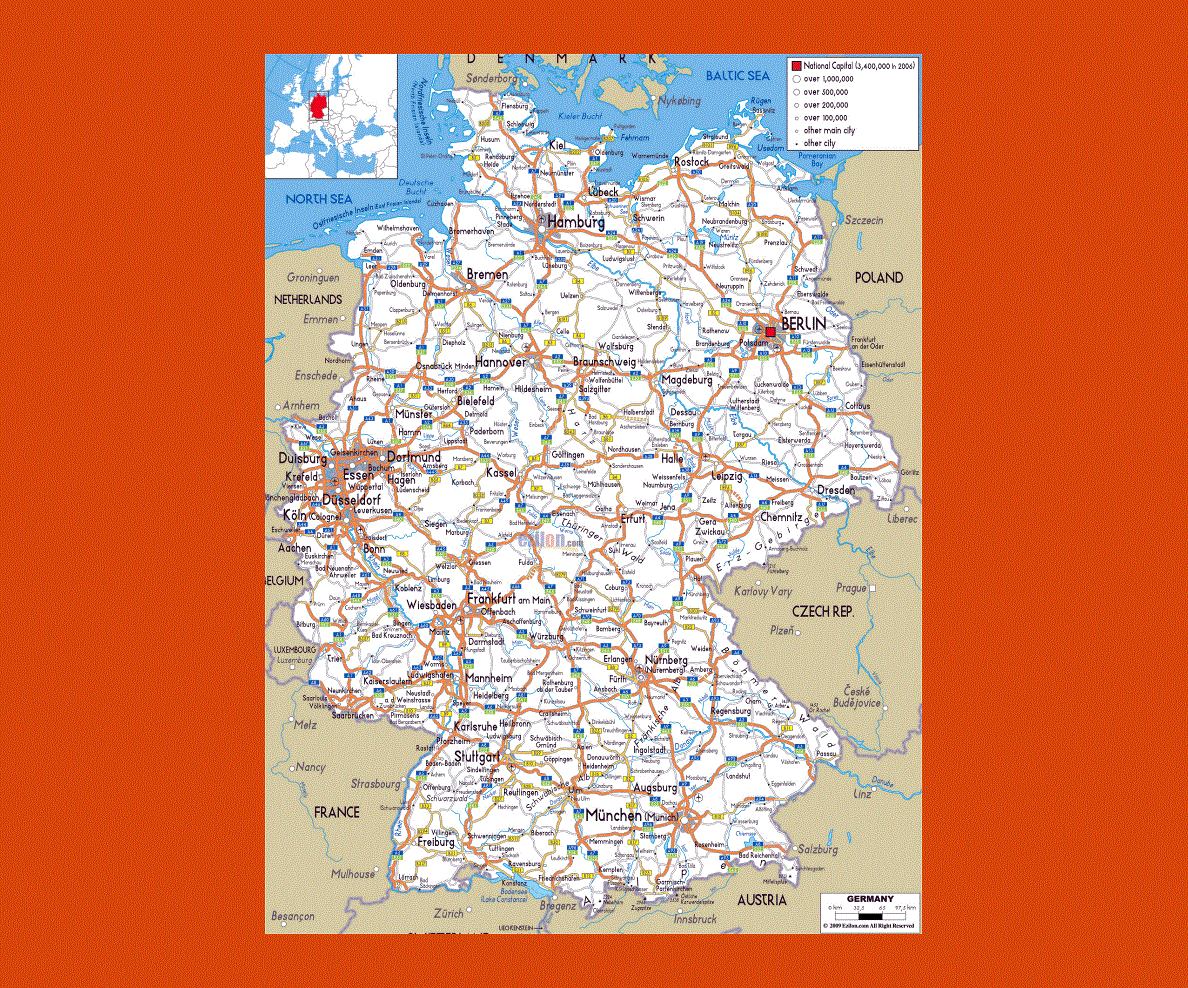Maps of Germany
Germany is situated in Western-Central Europe with its borders shared by Austria, Luxembourg, The Netherlands, Poland, Switzerland, Denmark, Belgium France and the Czech Republic.
With Berlin as its capital the Federal Republic of Germany is divided into 16 states throughout which the landscape varies considerably, the west featuring the Black Forest, the Rhine and Bavaria. The east boasts many lakes, hilly lowlands and mountain ranges.
Germany has a rich heritage of history, nature and fine arts, its past of turmoil and conflict has left the country with a strong idealistic principles contrasting with its high academic trends, found in the historic university cities such as Heidelberg.
Visit the Berlin Wall Museum at Checkpoint Charlie, where the history of Germany came to a turn point with the fall of the barriers between the east and west.
The towns of Bamberg, Labeck and Goslar are classified as architectural heritage sites by the UNESCO World Heritage, while the charming island of Mainau on Lake Constance is scattered with historic buildings, multicolored roofs and flower decorations.
The largest and most porpulous cities in Germany mentioned in the map above are Berlin, Hamburg, Munich, Cologne (North Rhine-Westphalia), Frankfurt am Main (Hesse), Essen, Stuttgart (Baden-Wurttemberg), Dortmund, Dusseldorf and Bremen.
The climate is temperate throughout the country with warm summers and cold winters, but prolonged periods of frost or snow are rare. Rain falls throughout the year.

